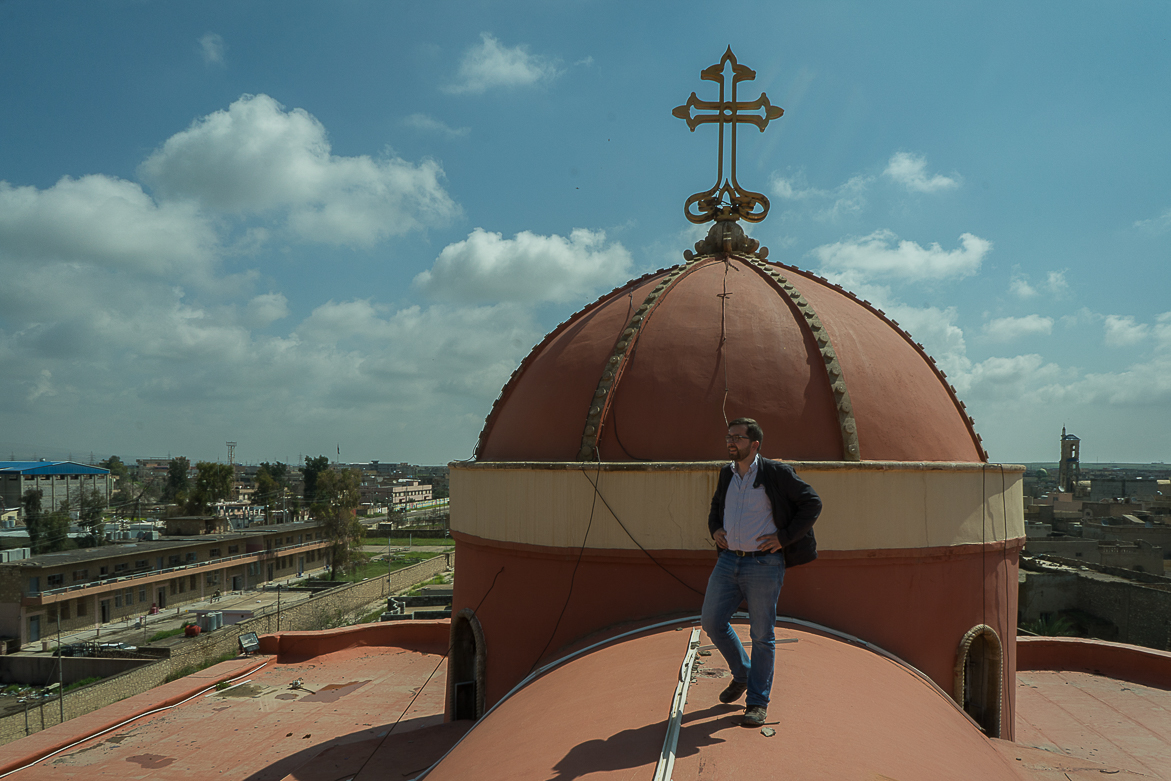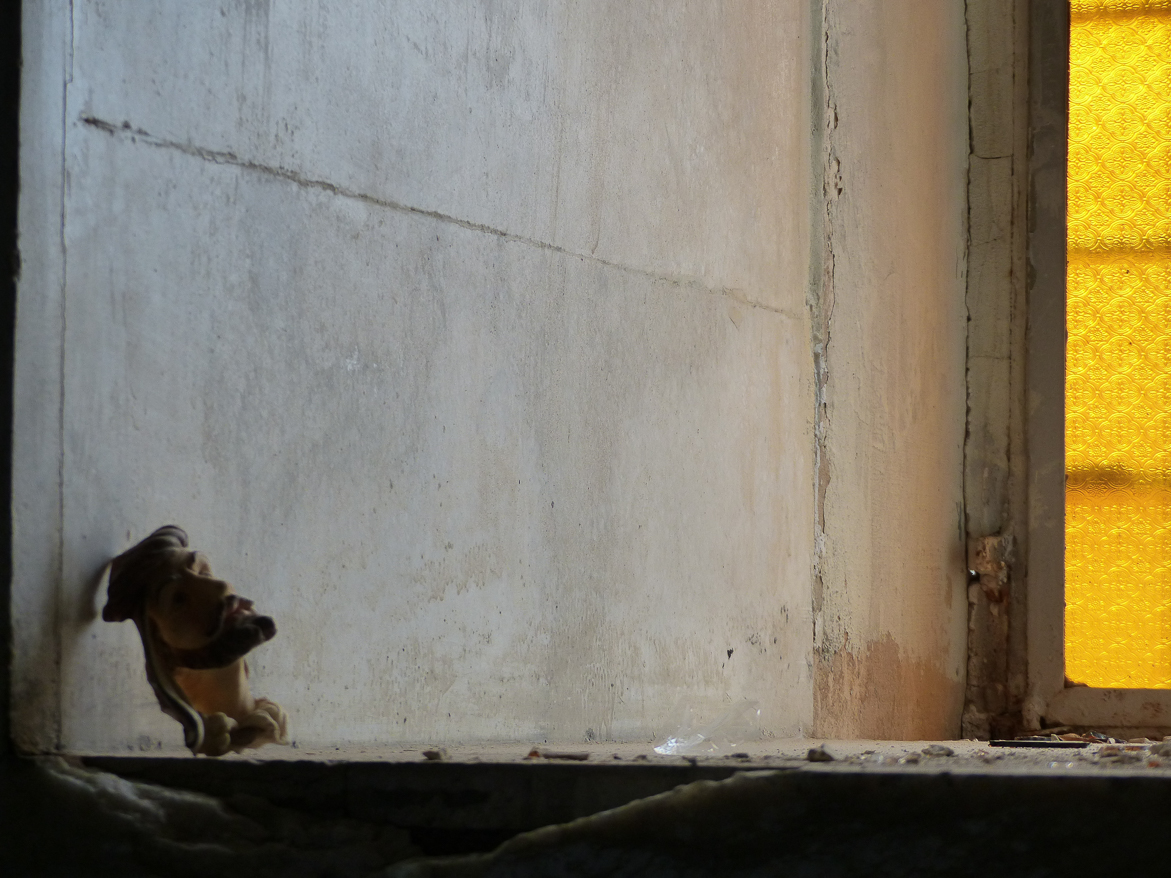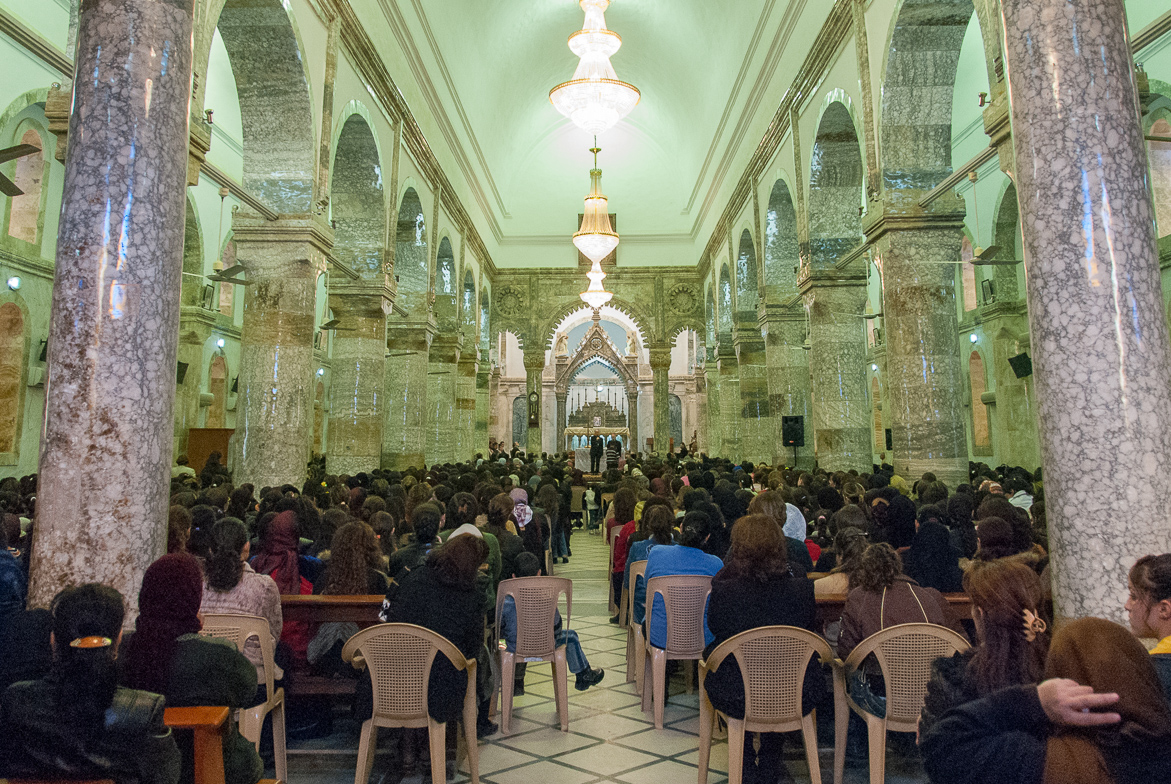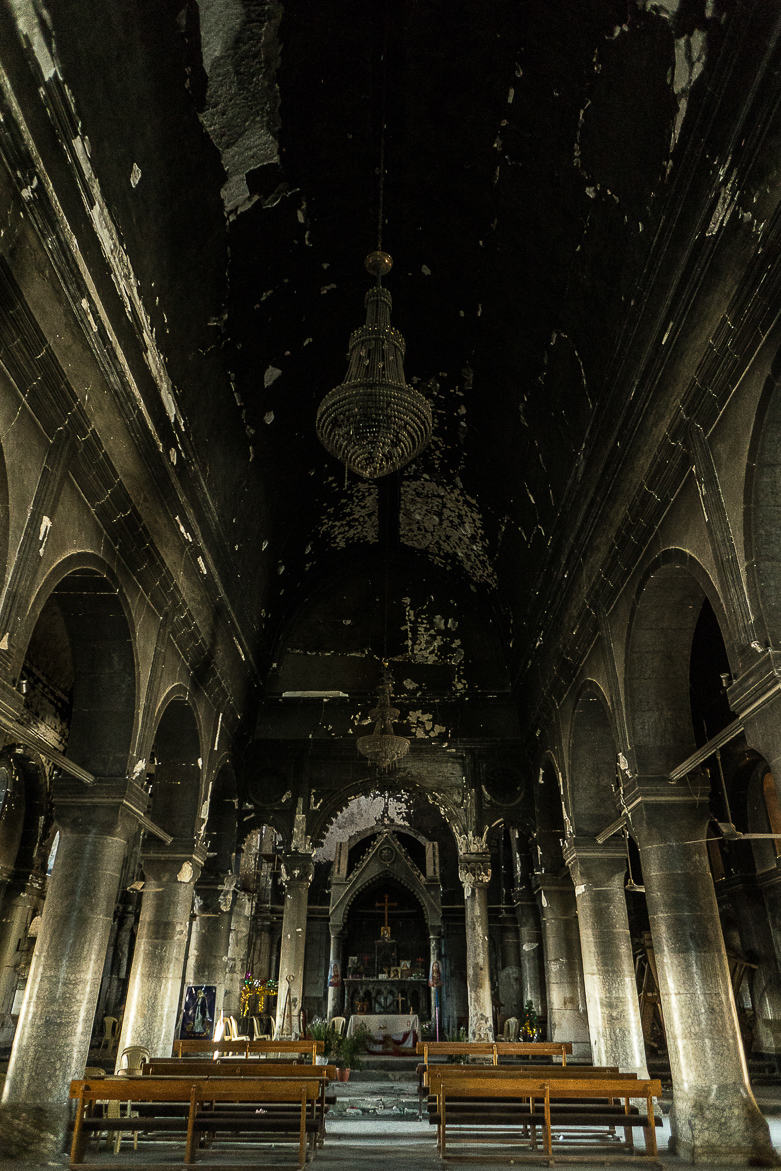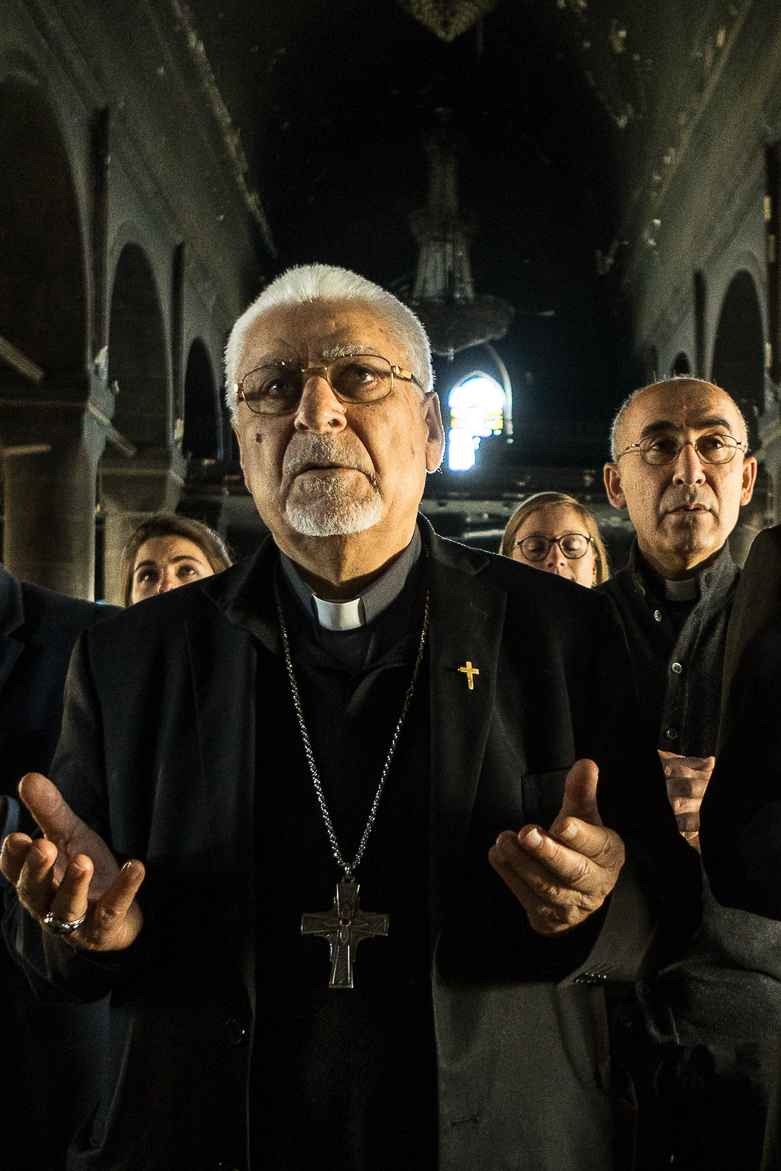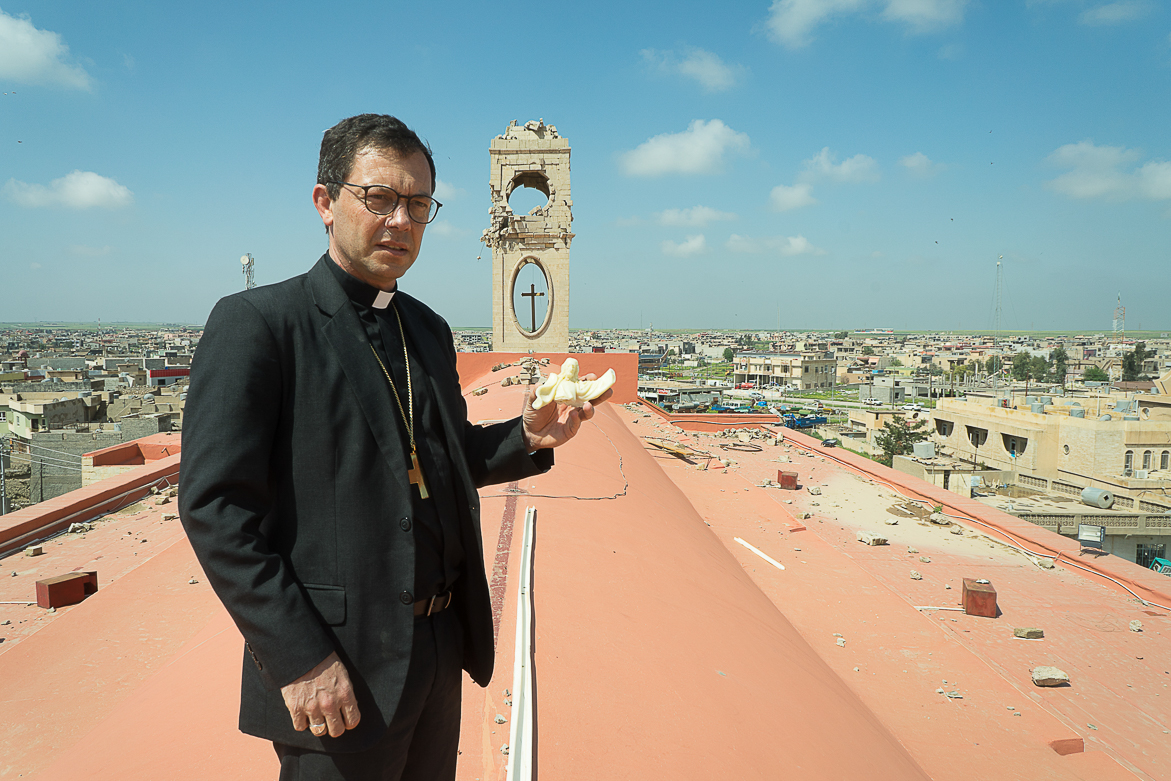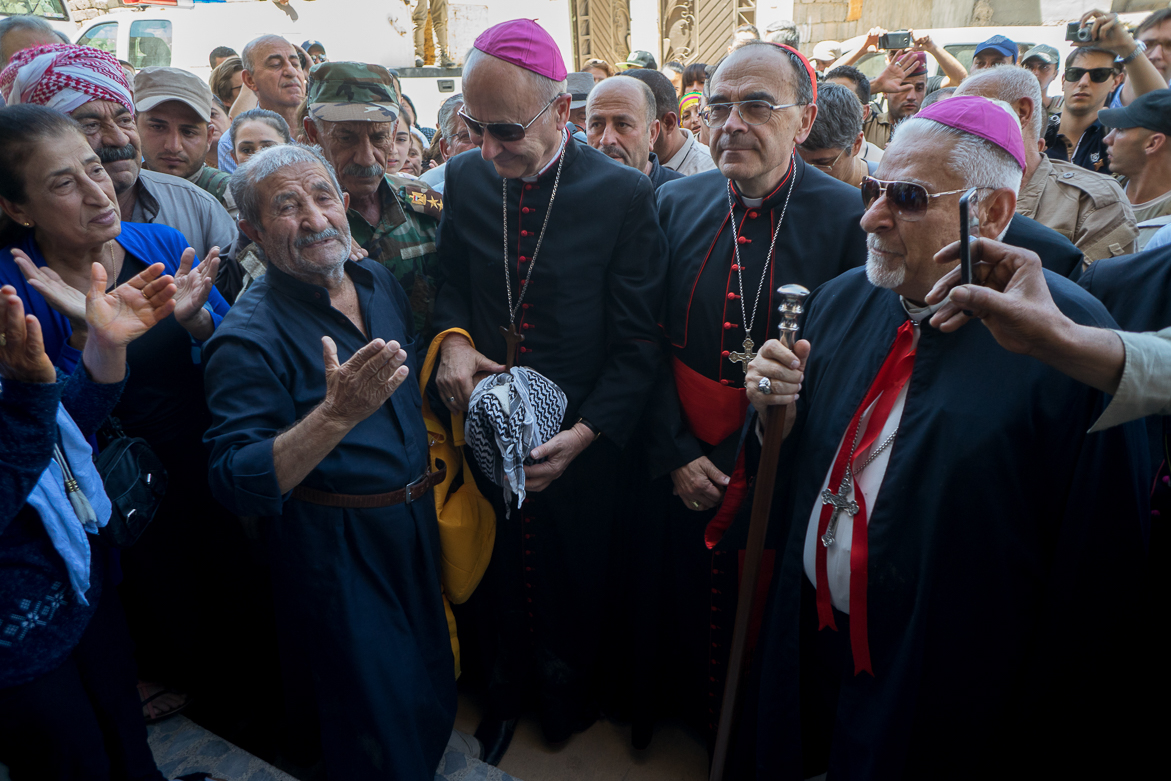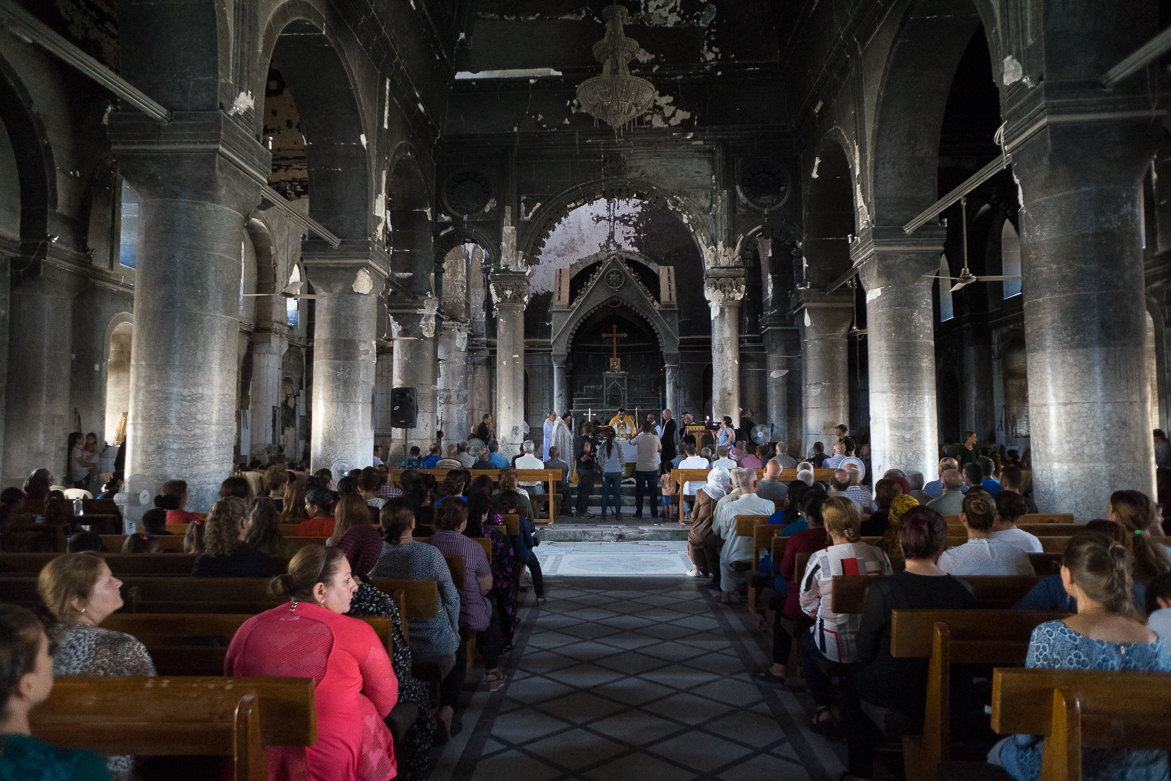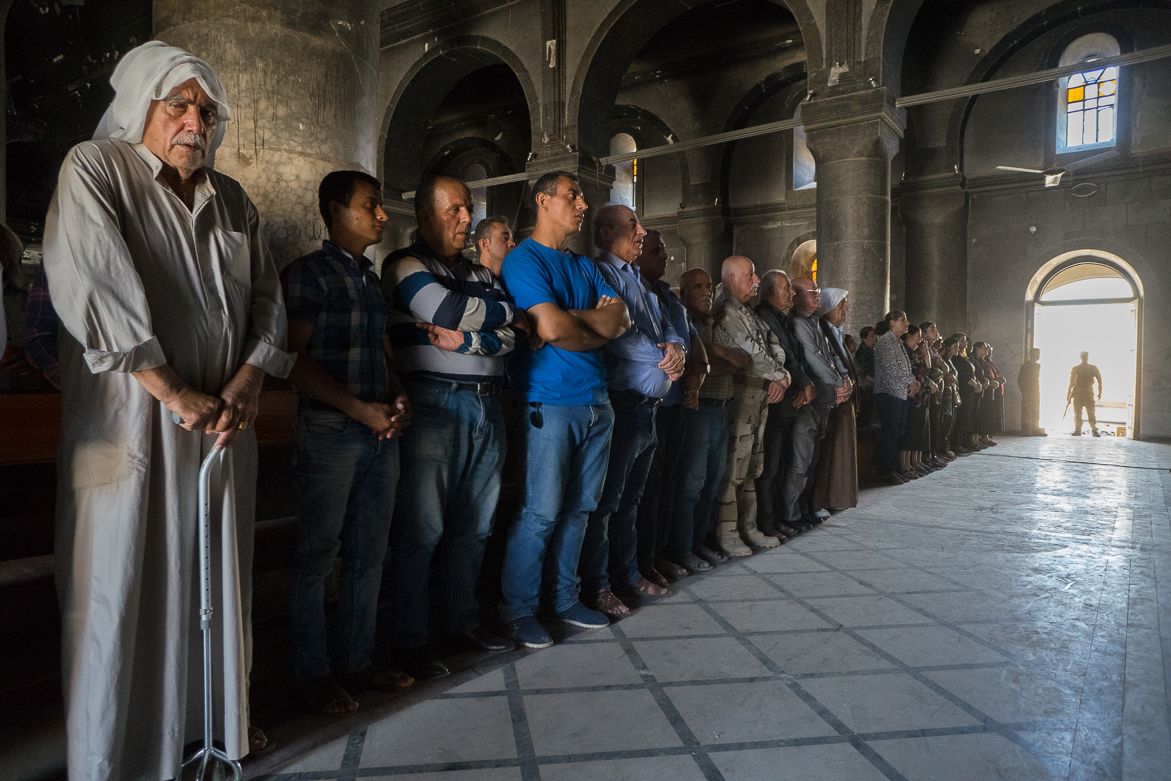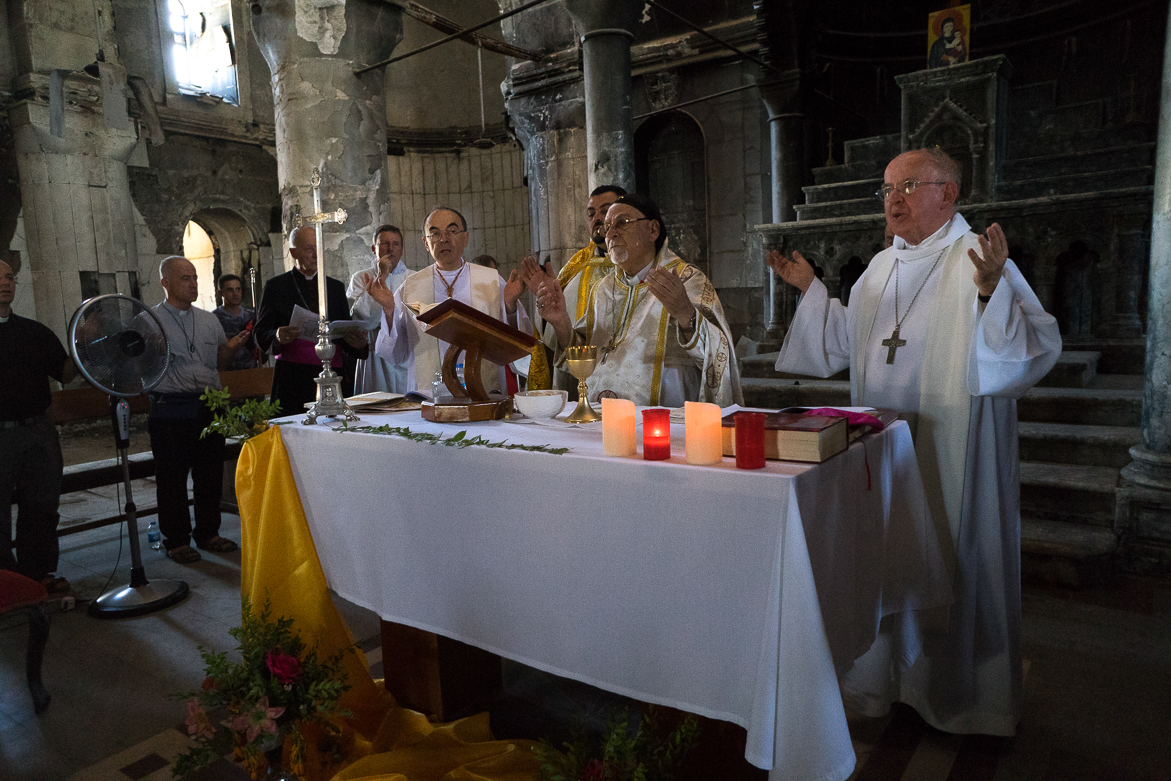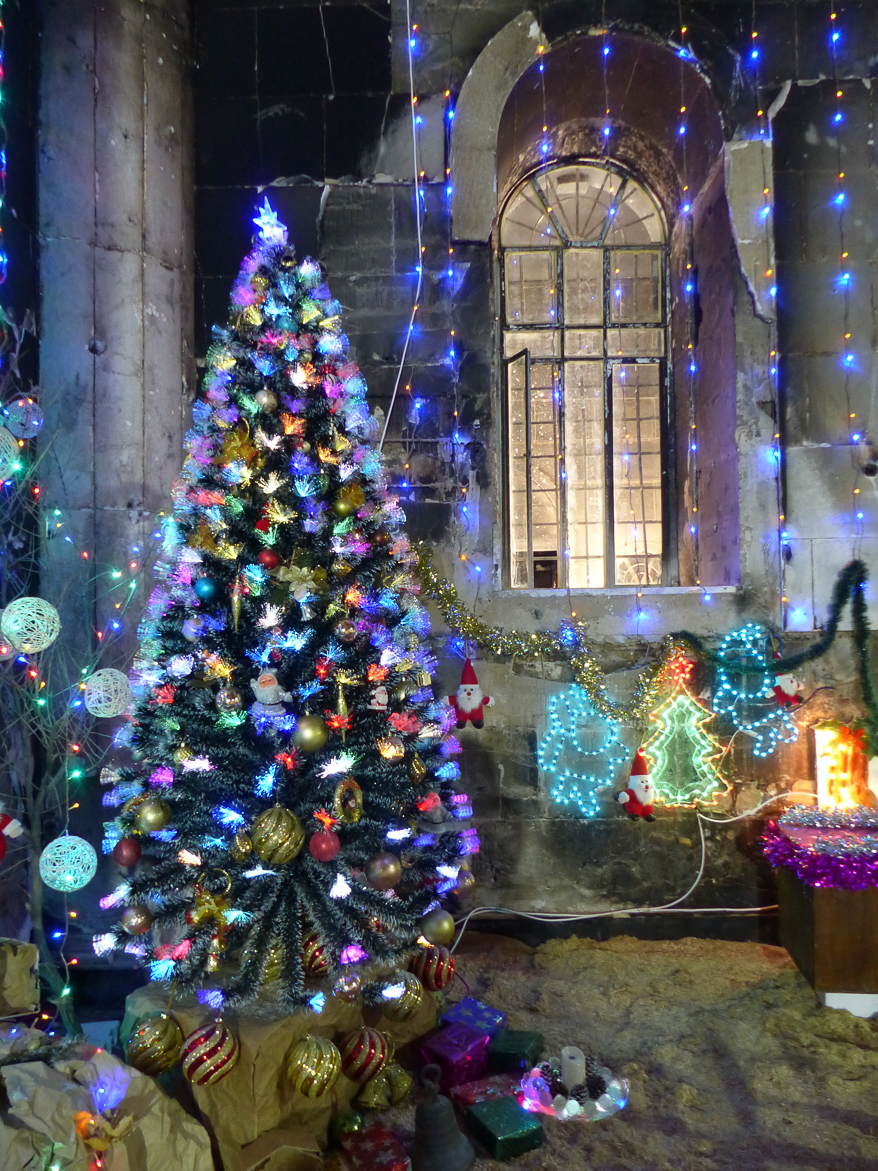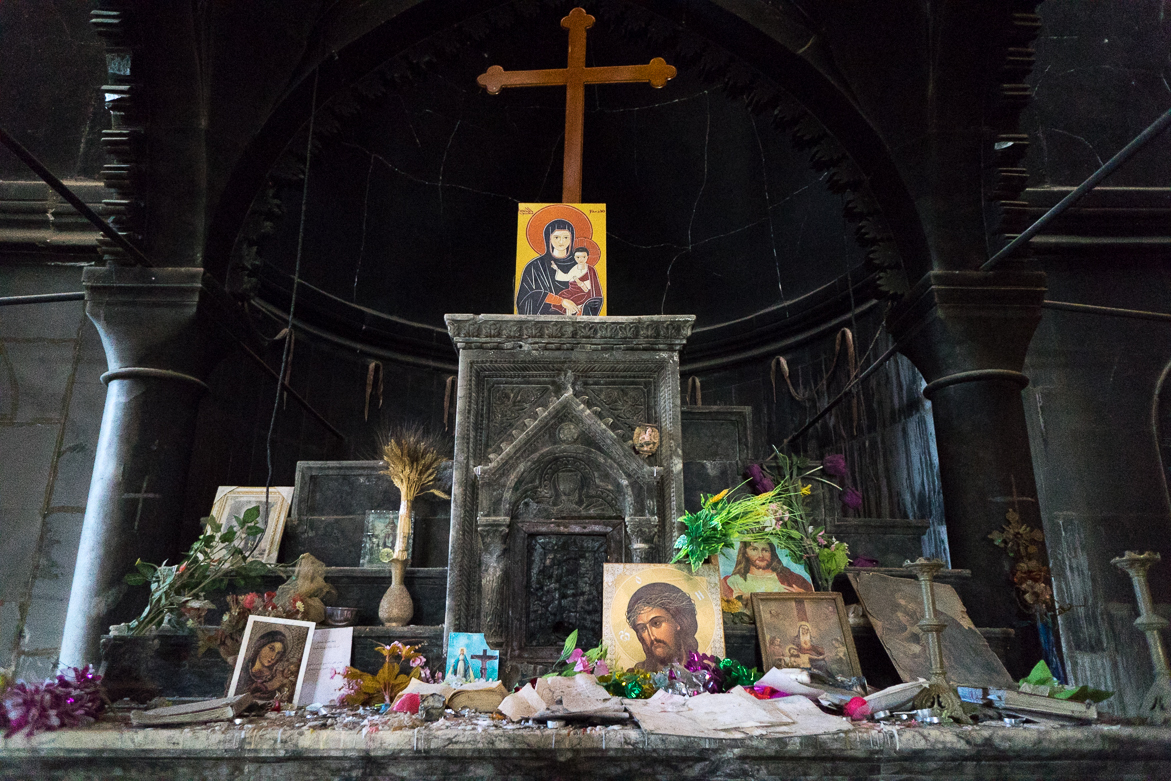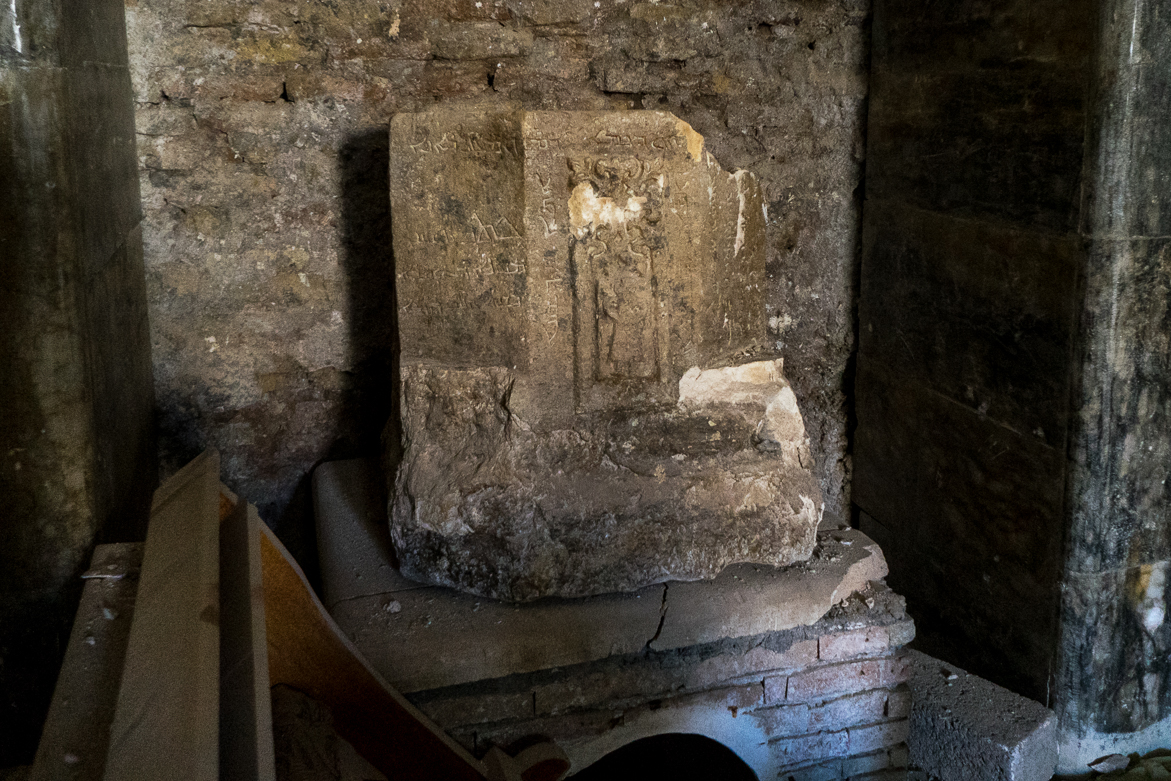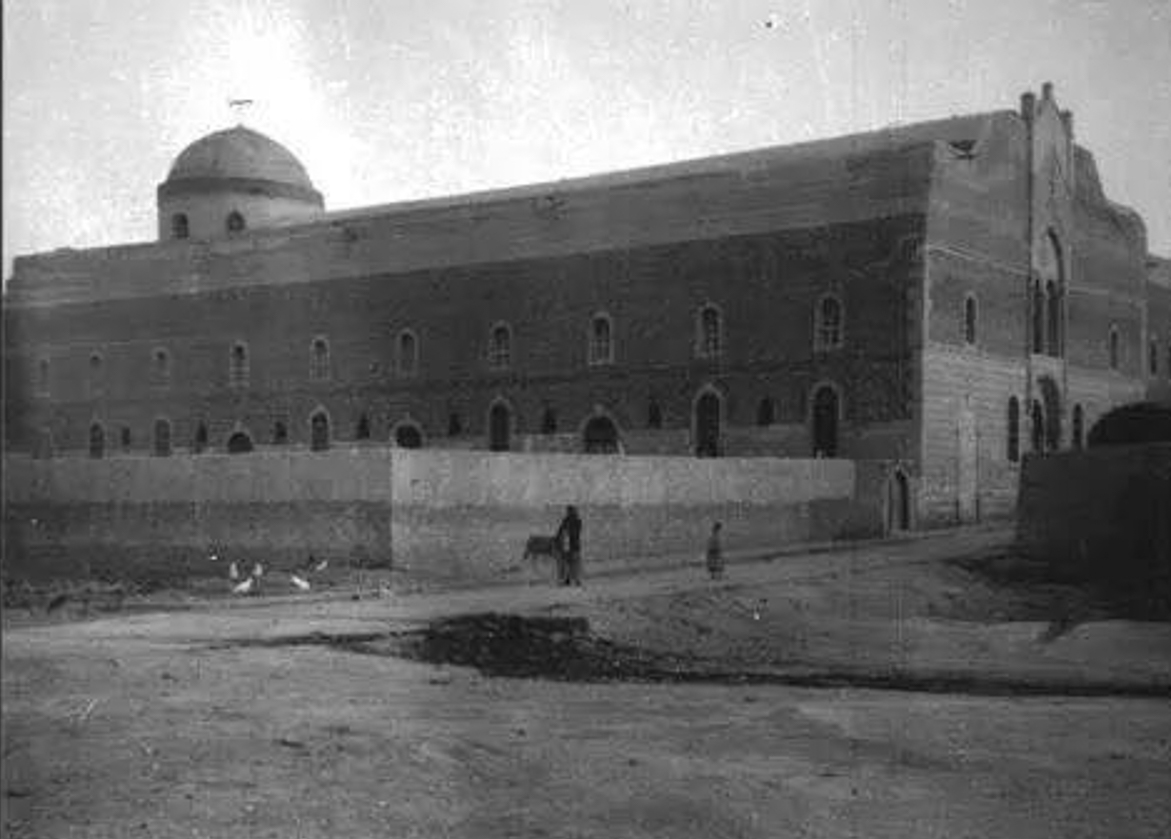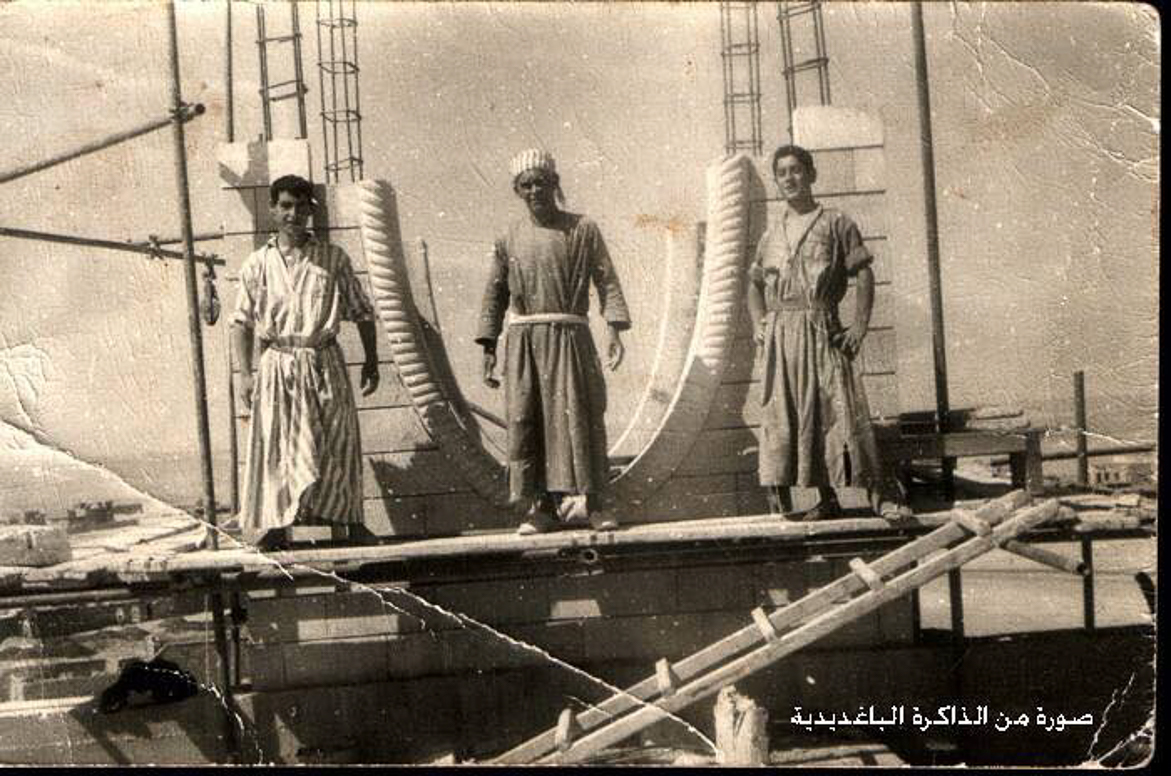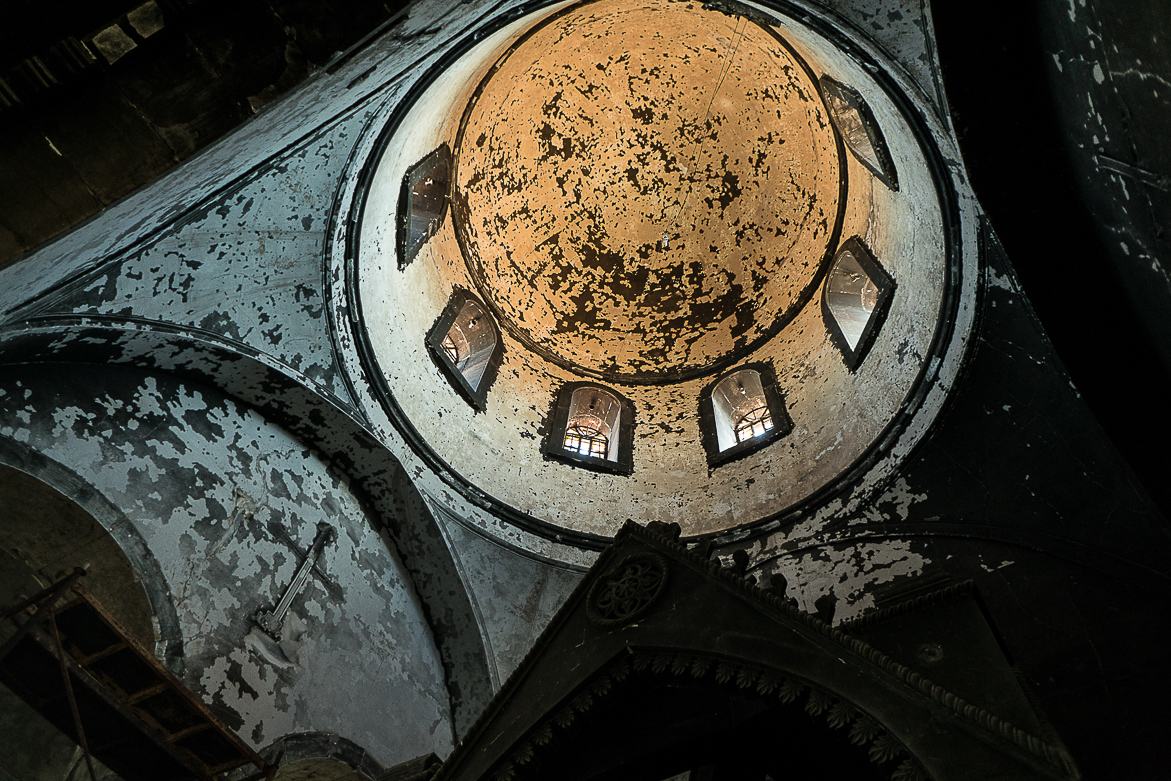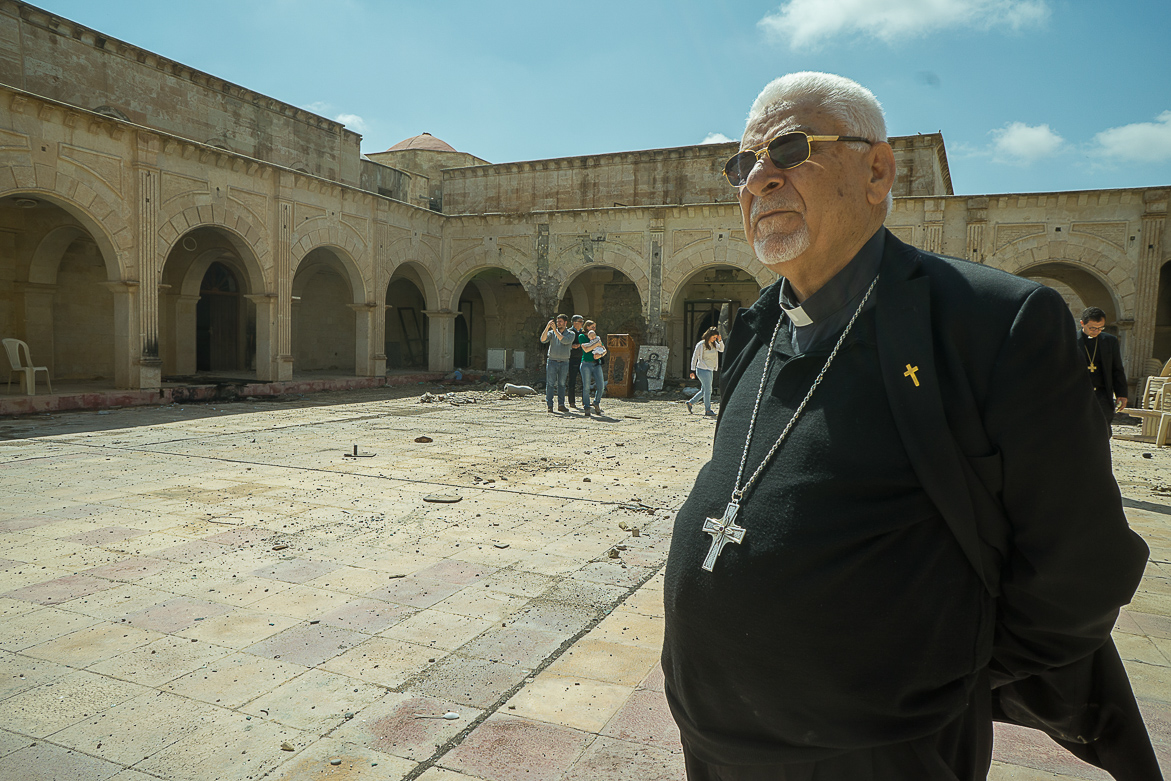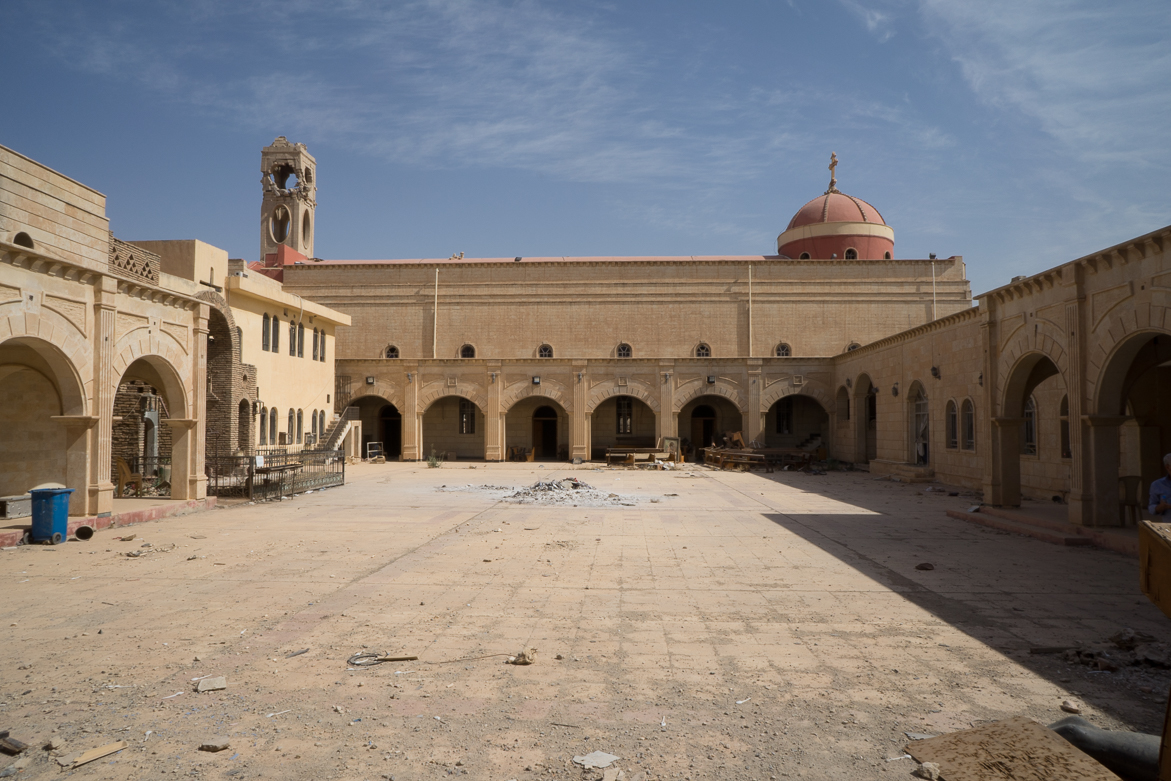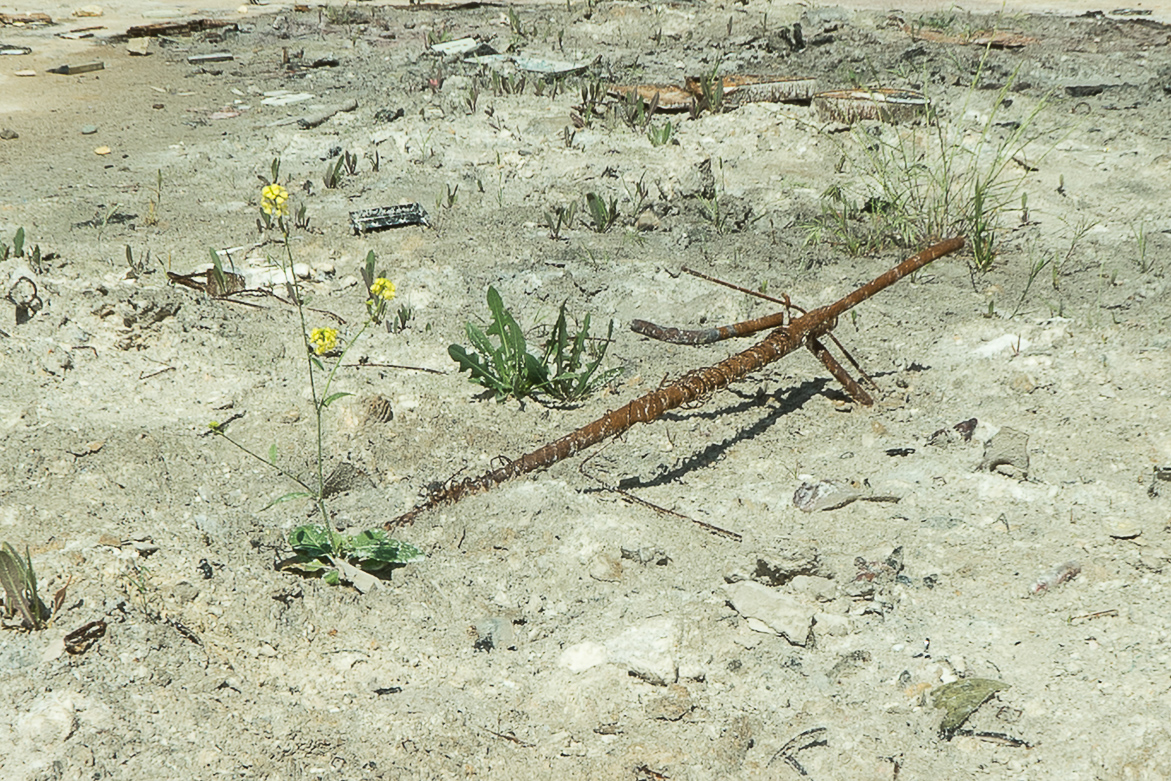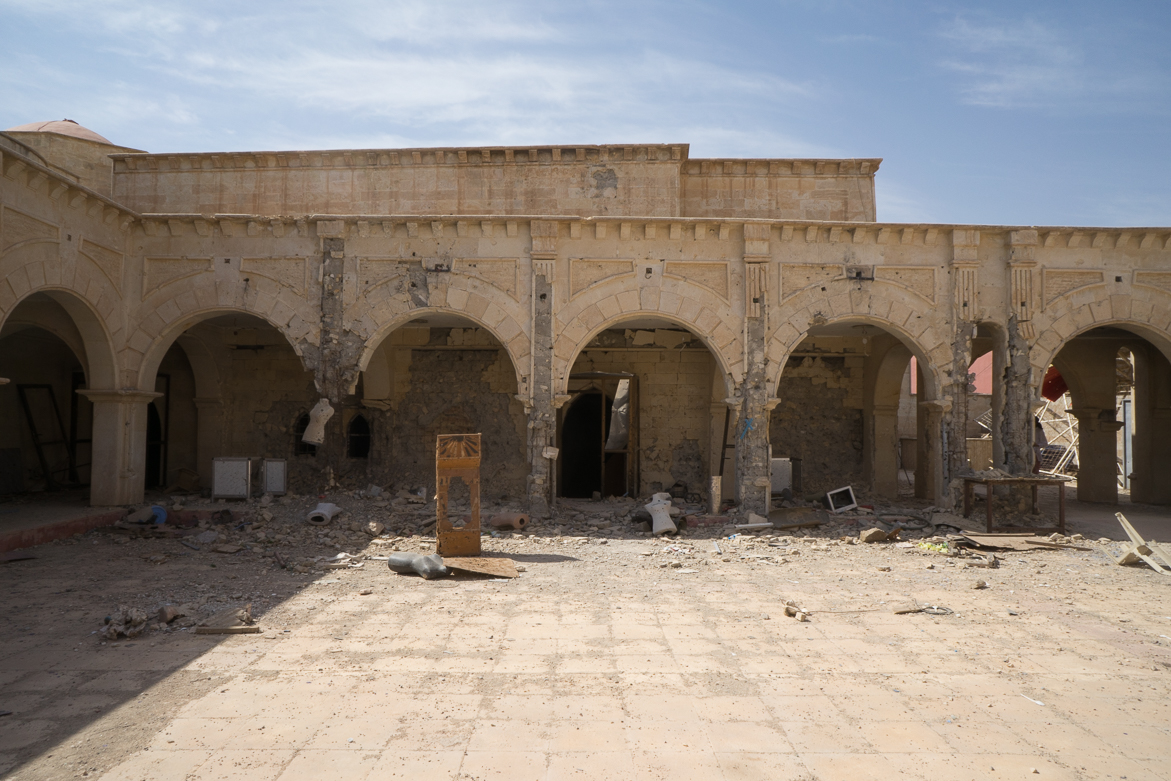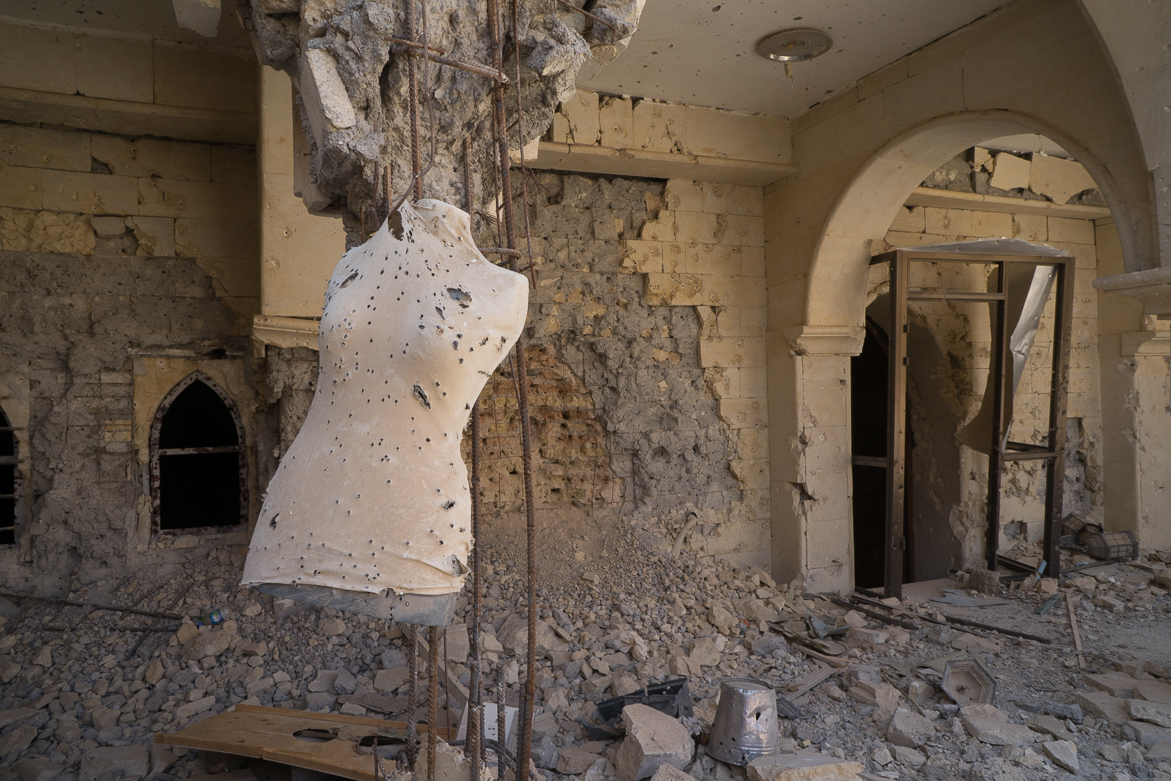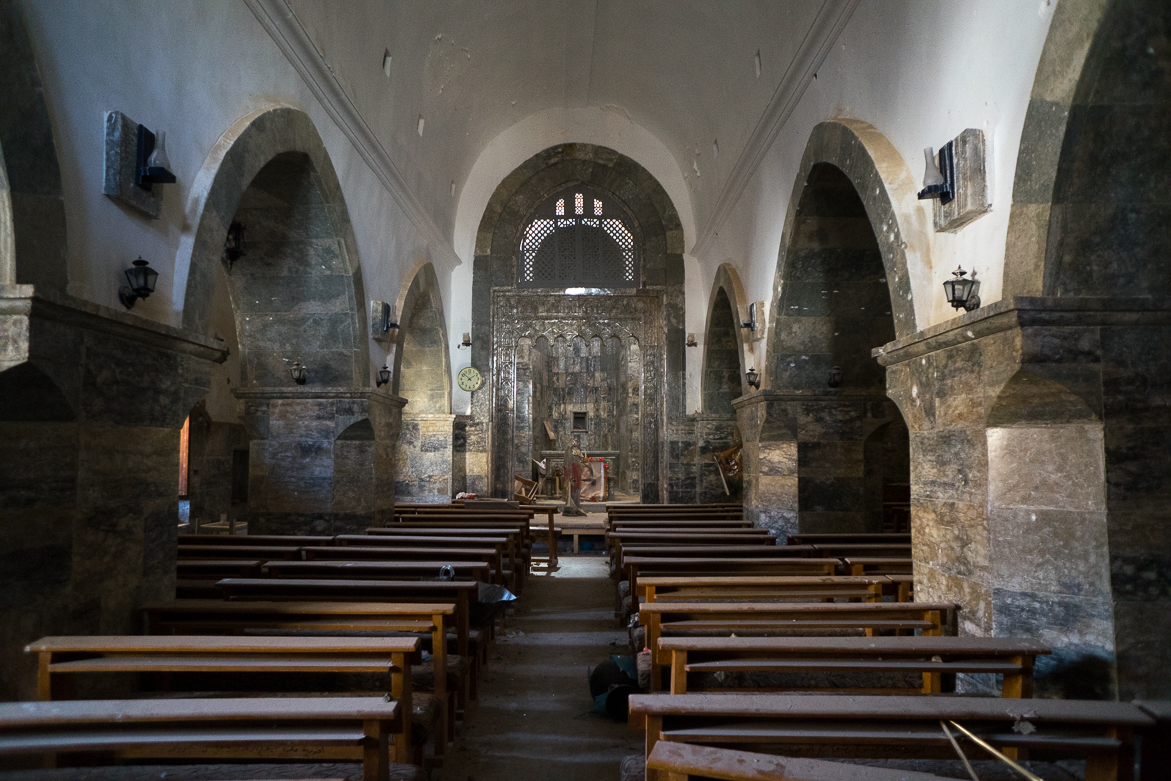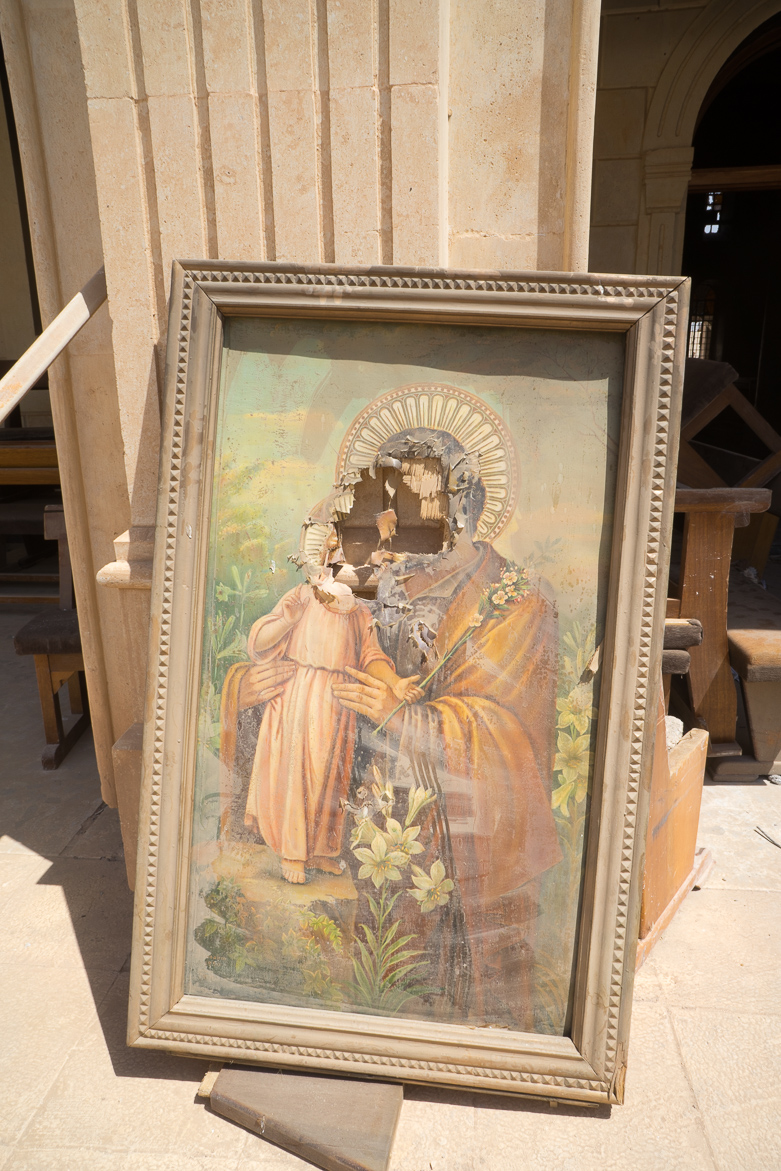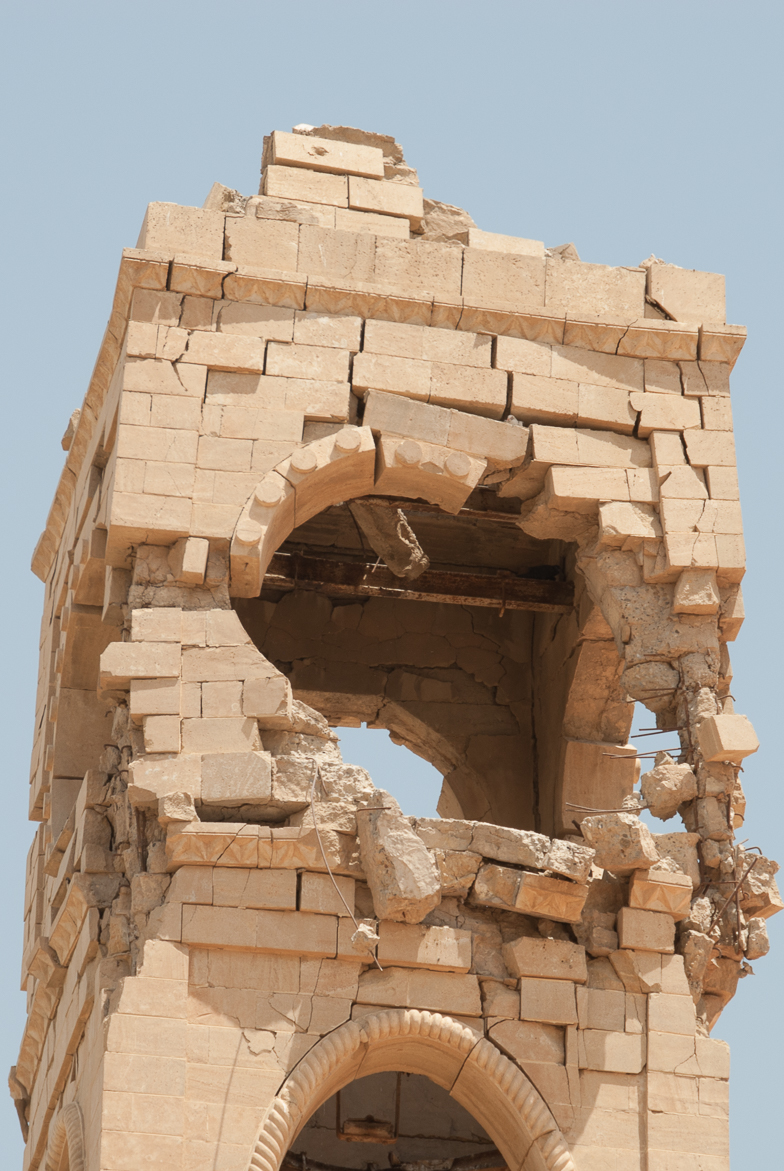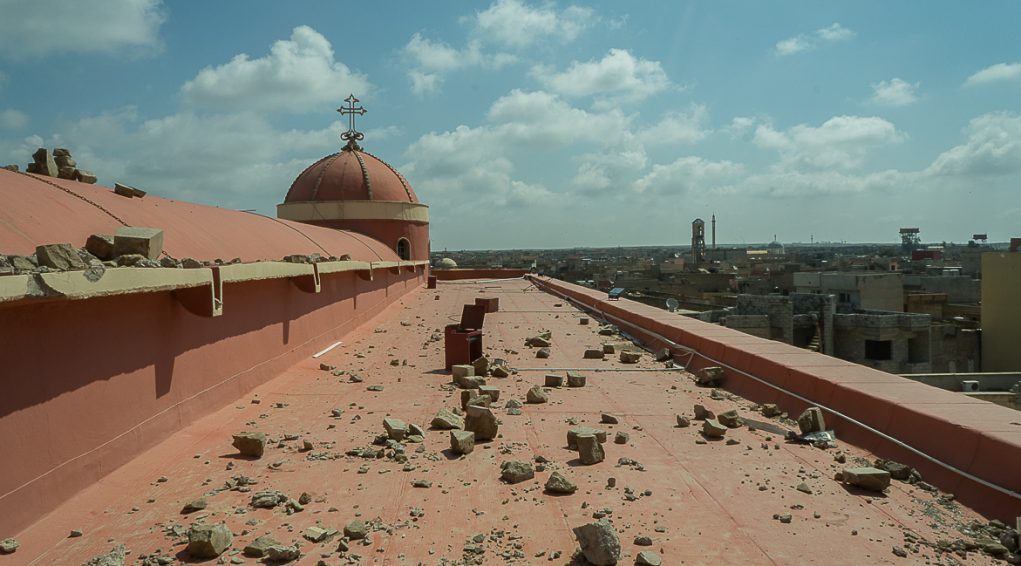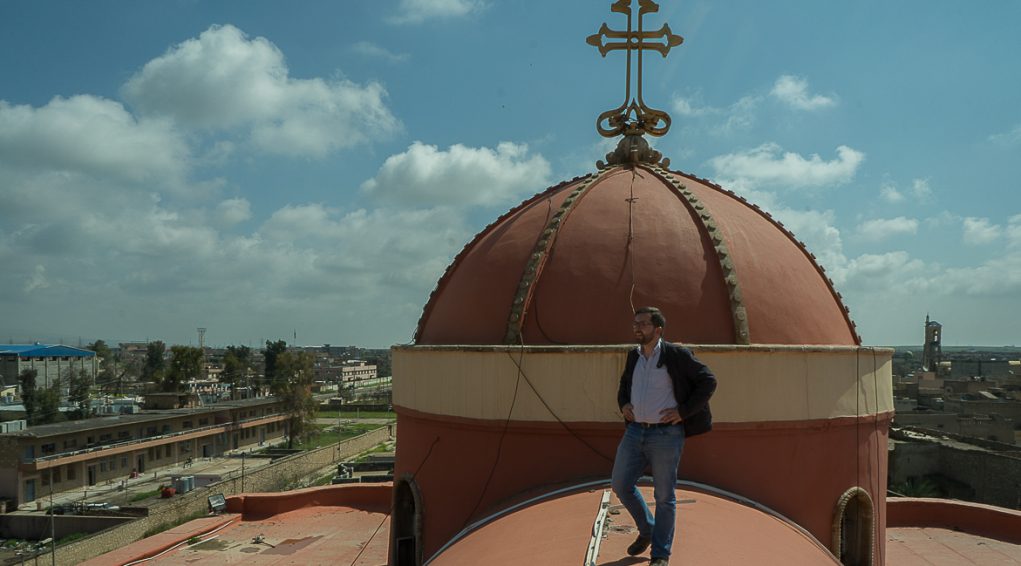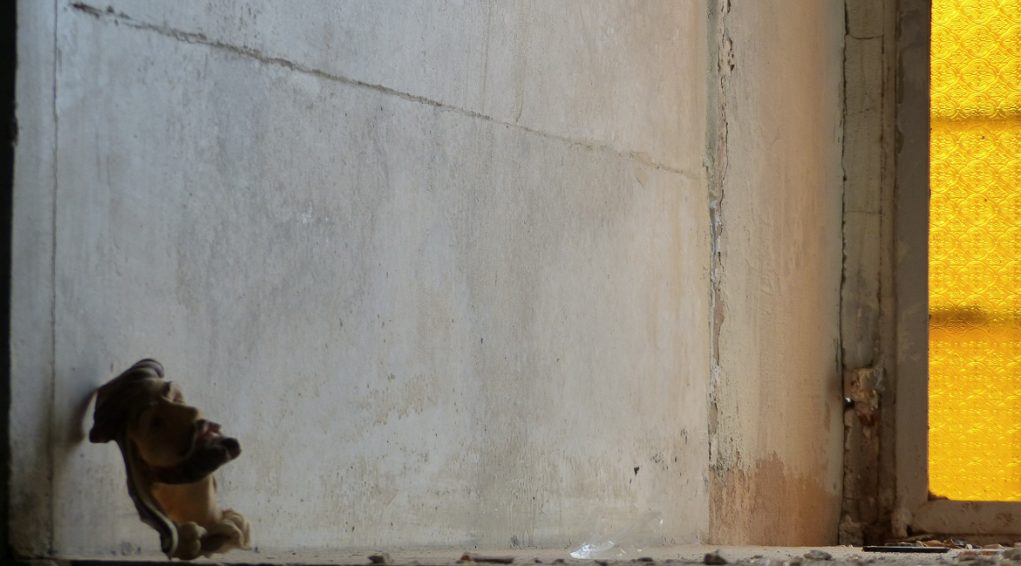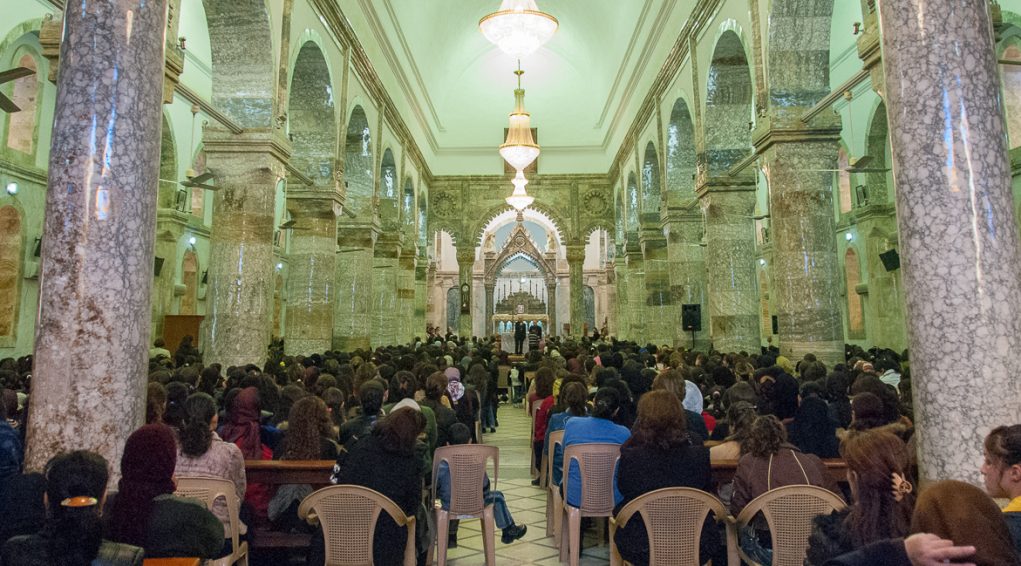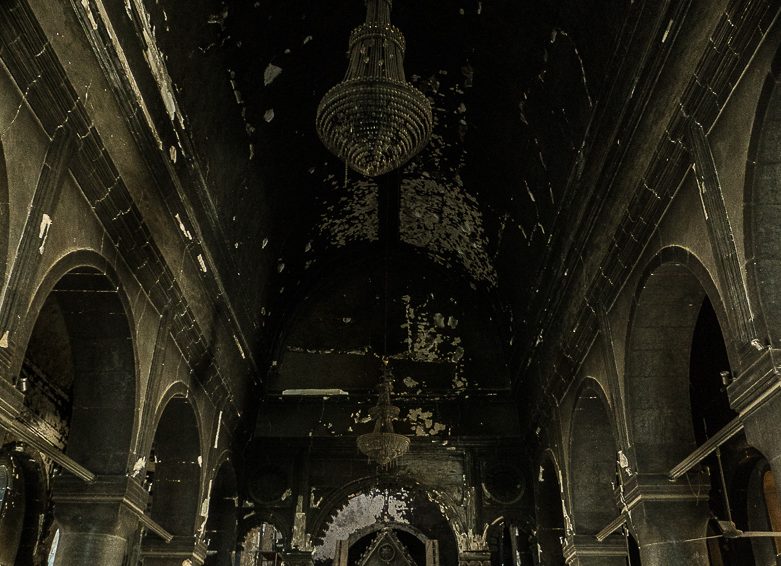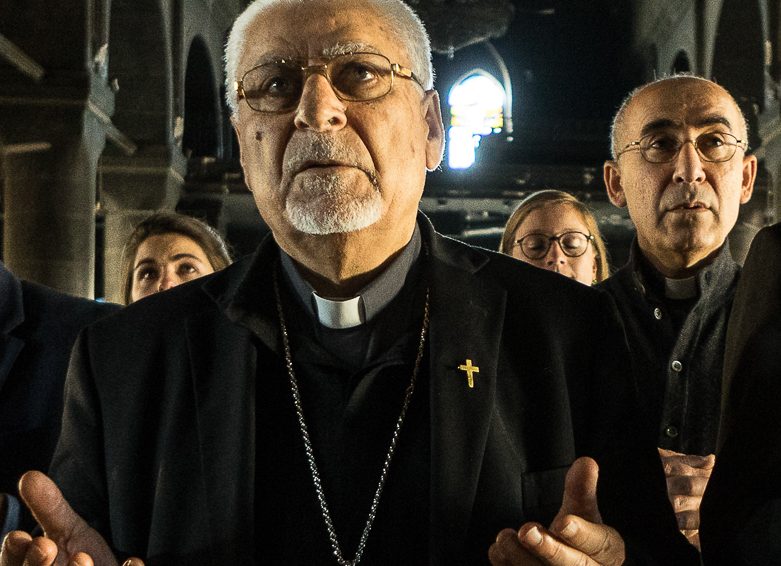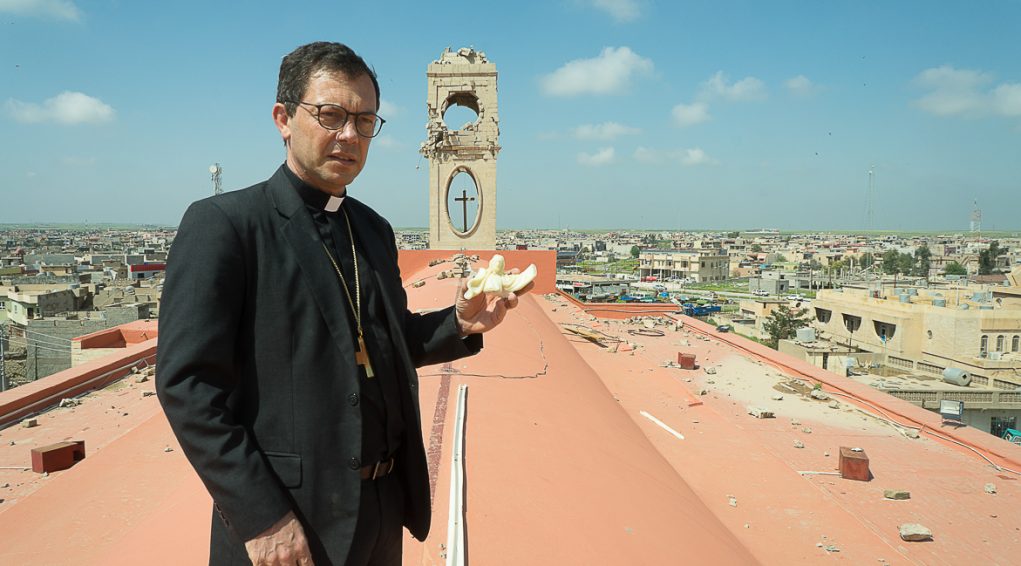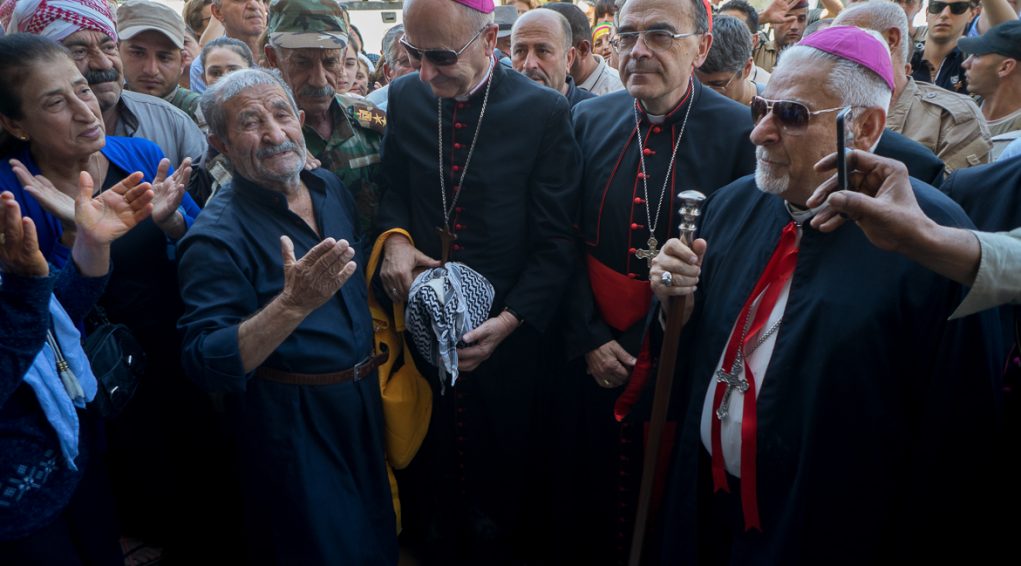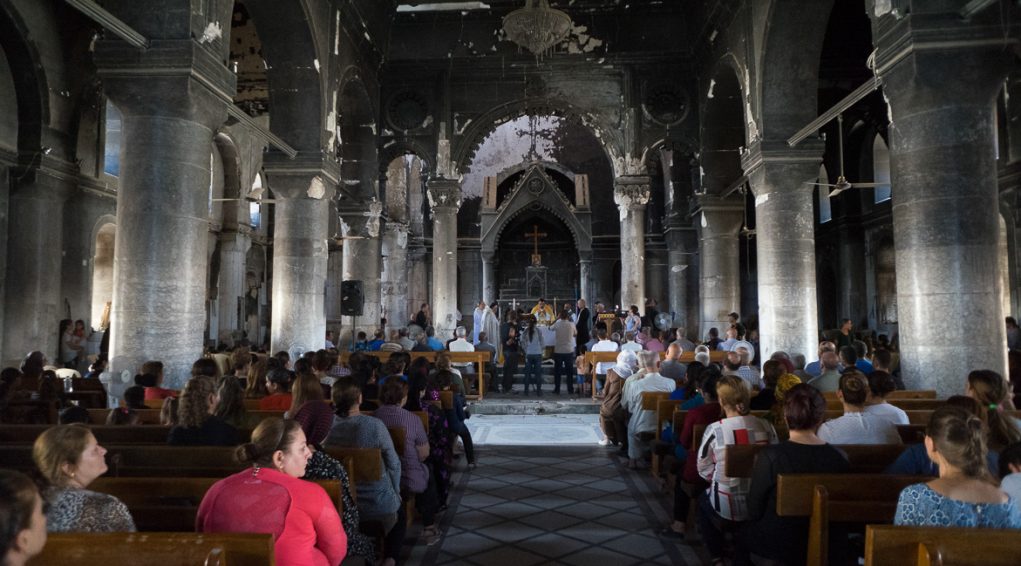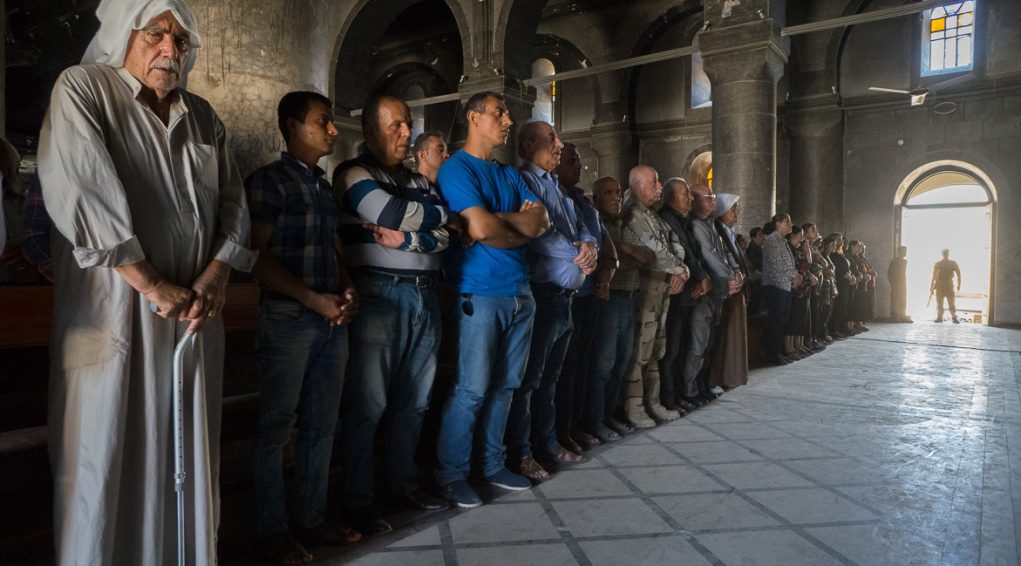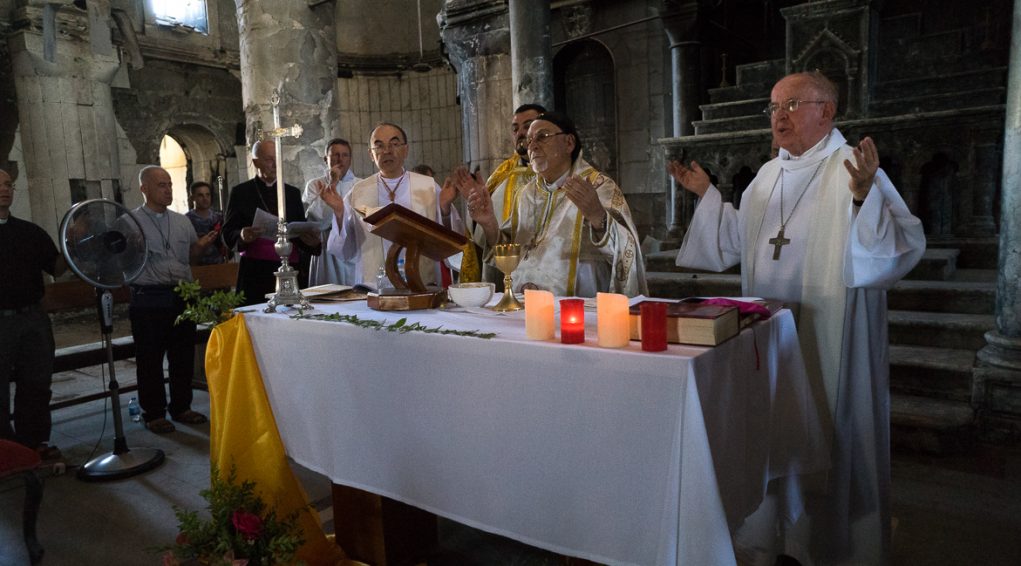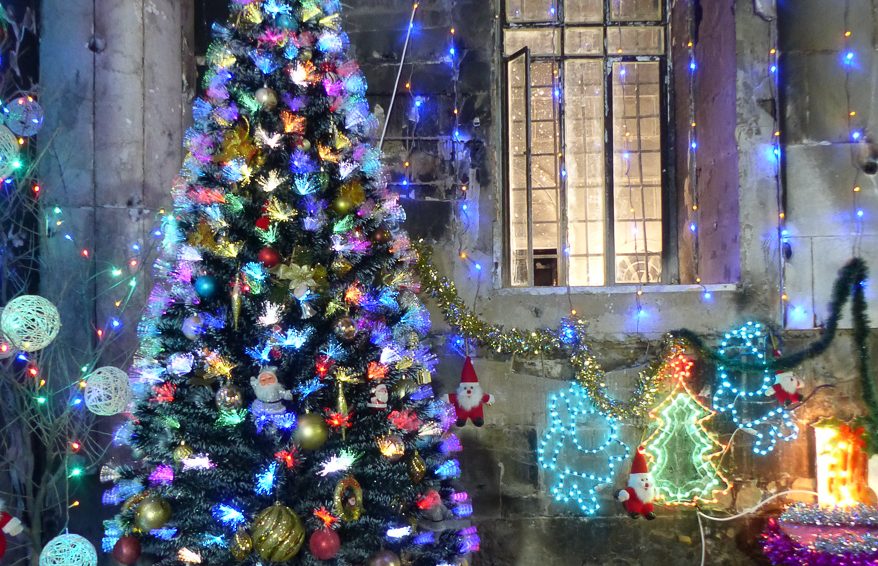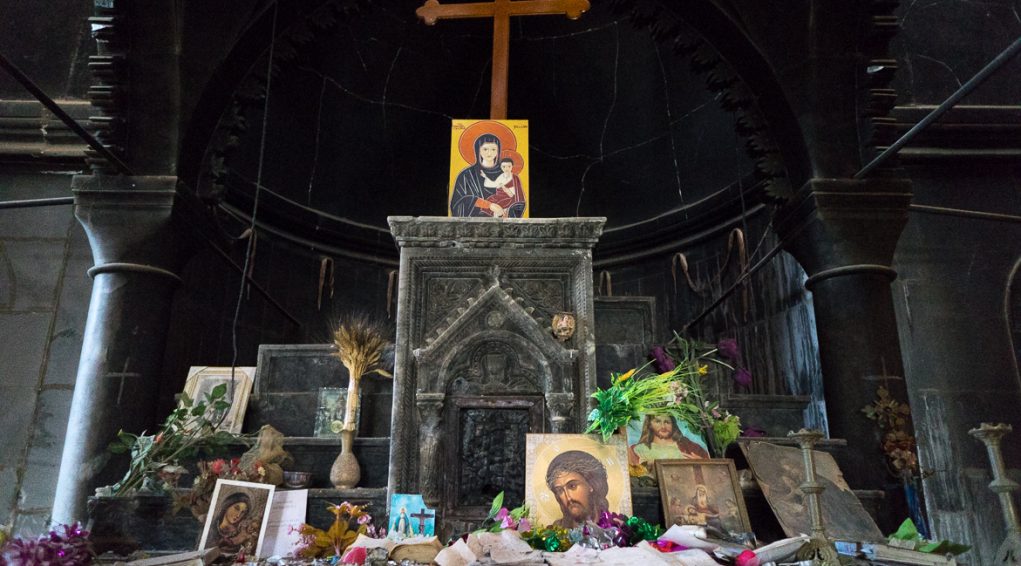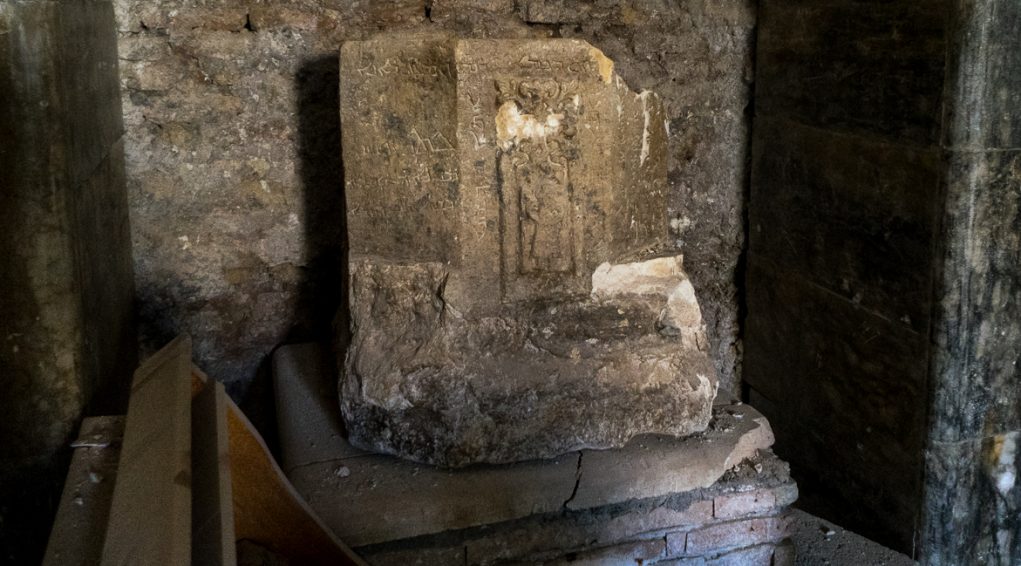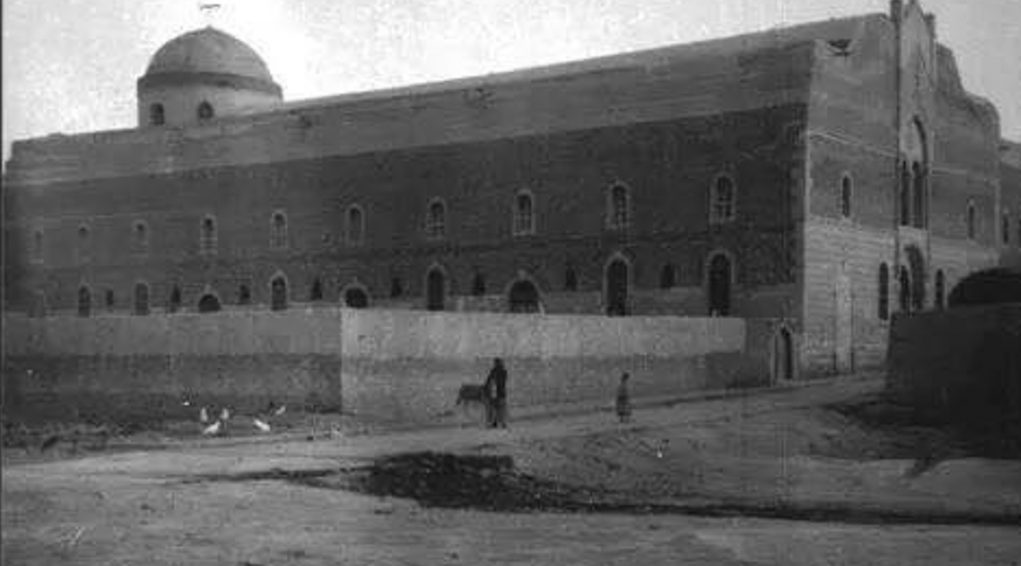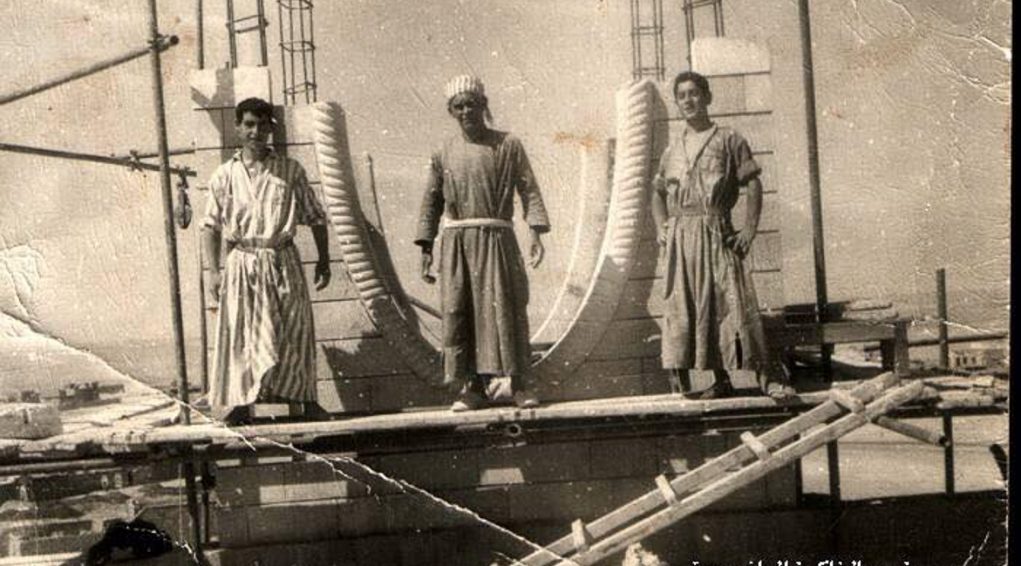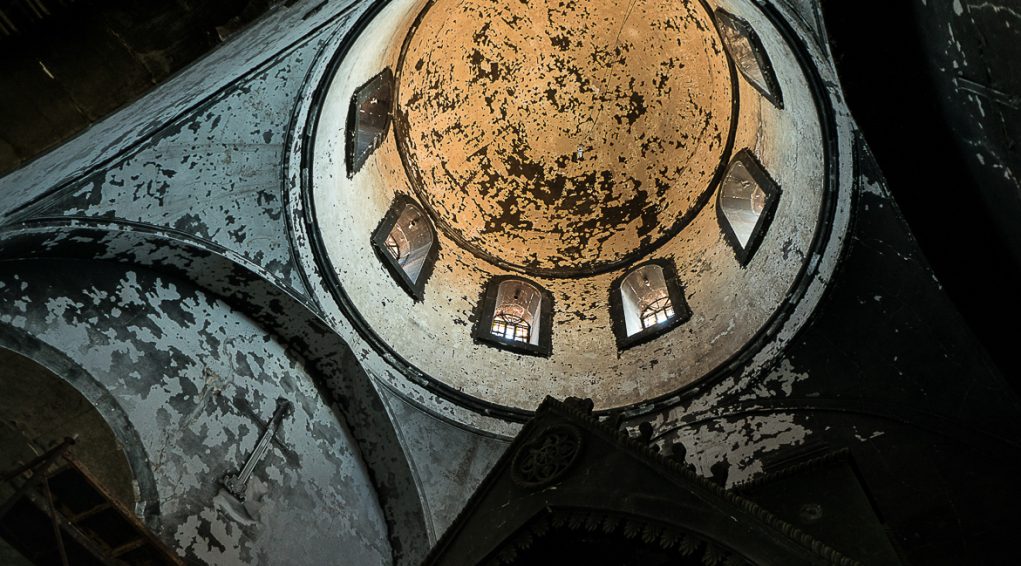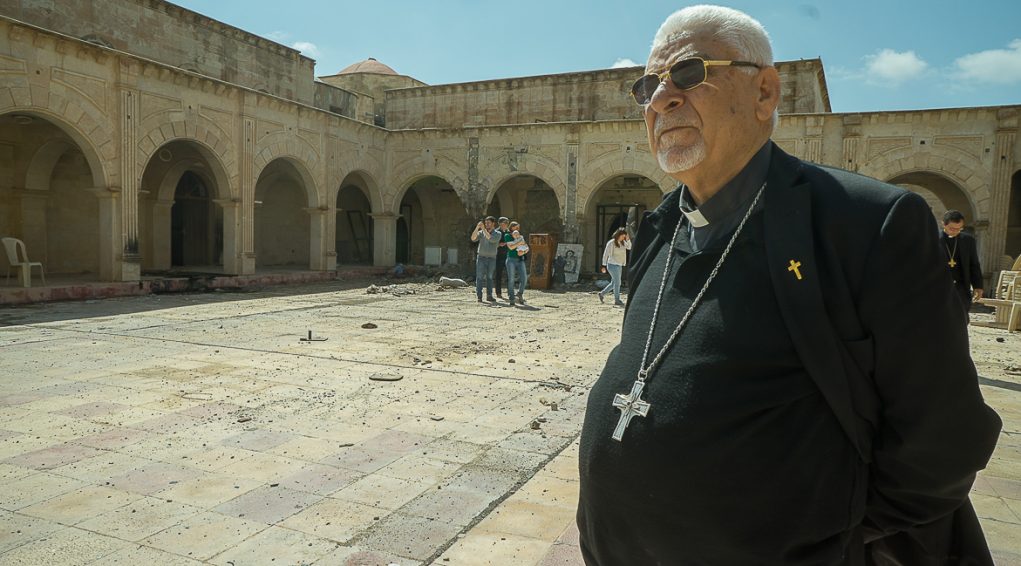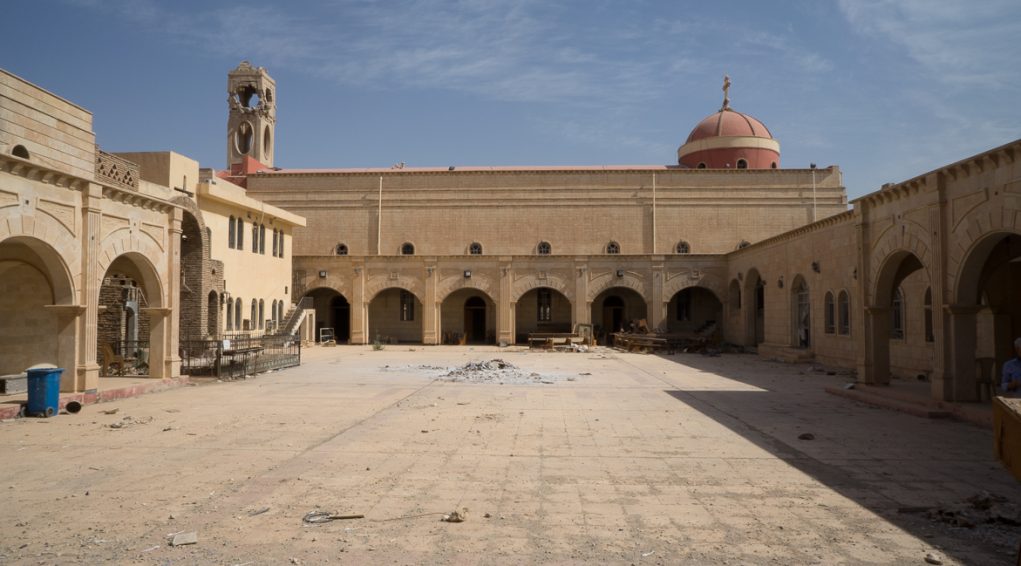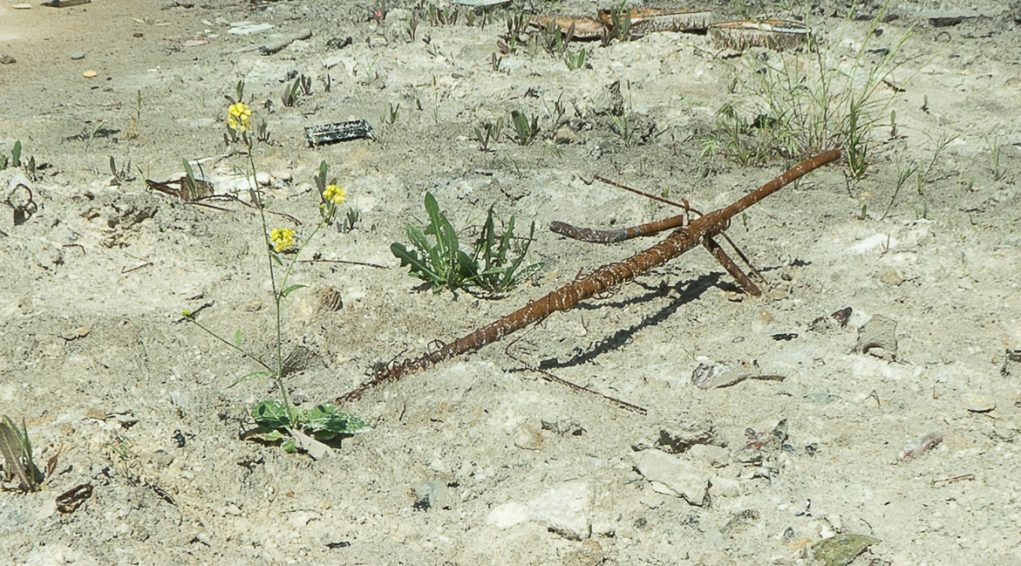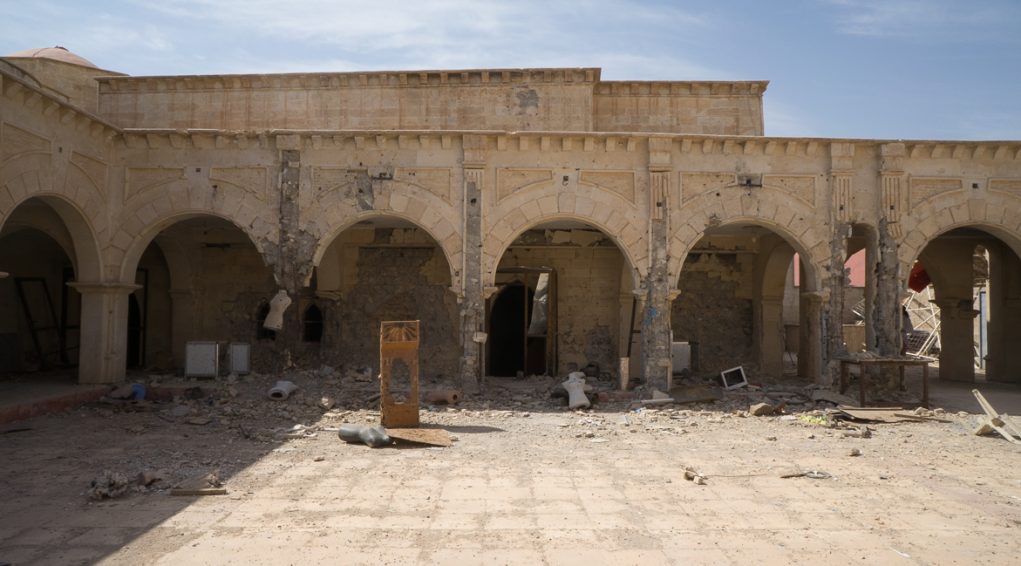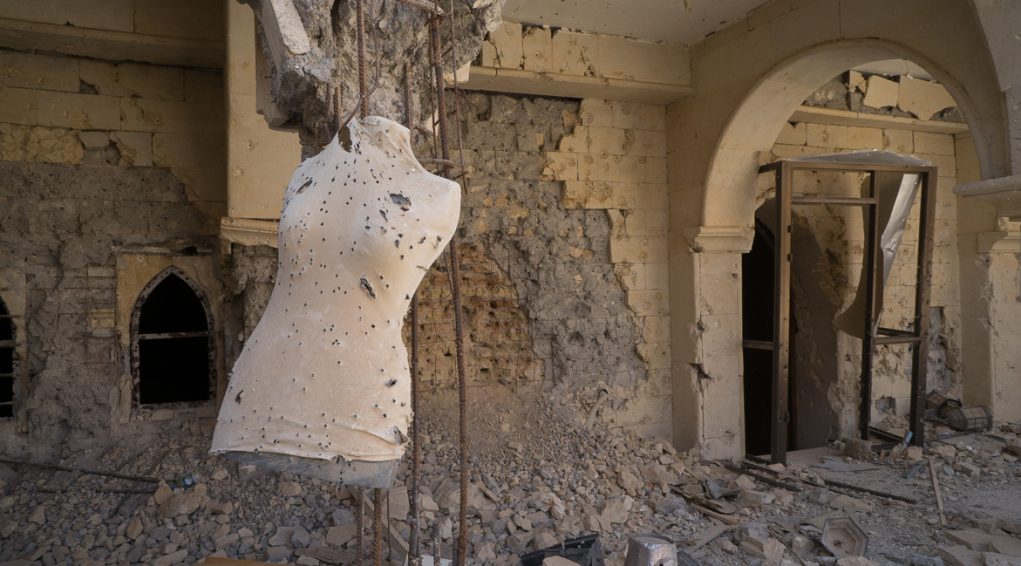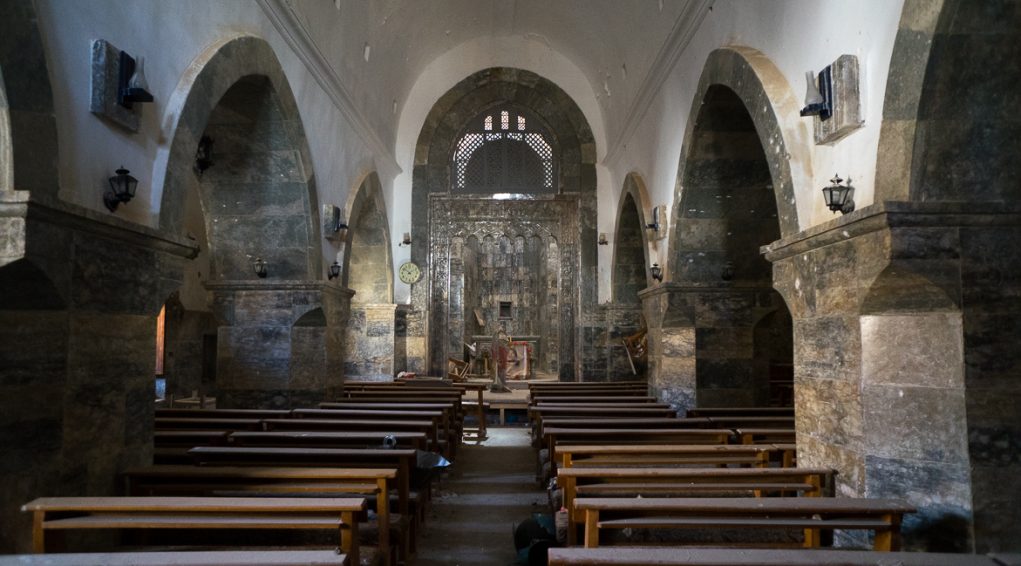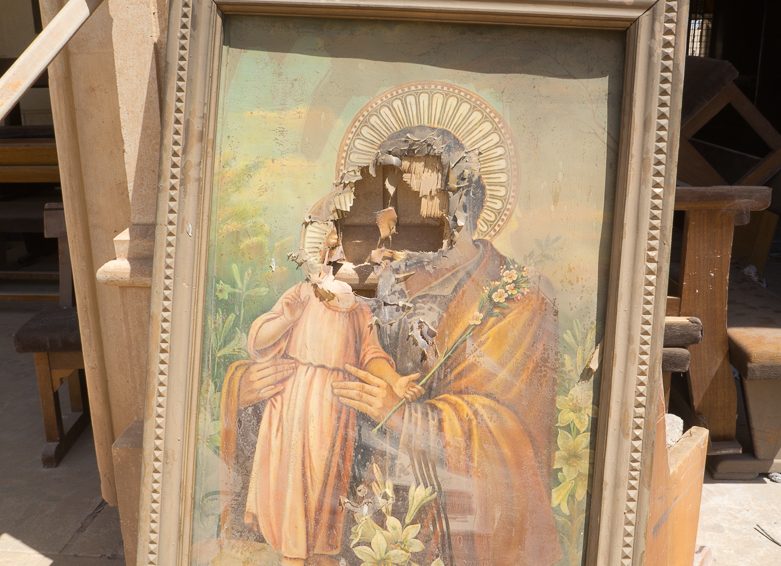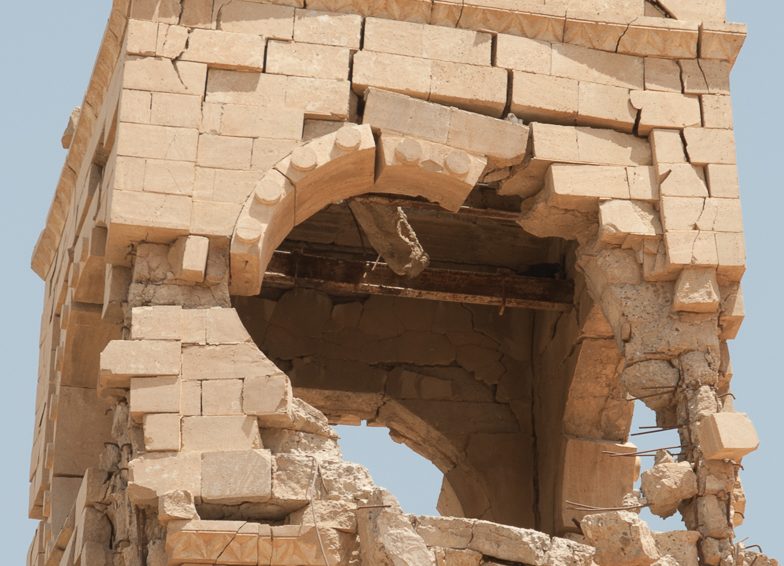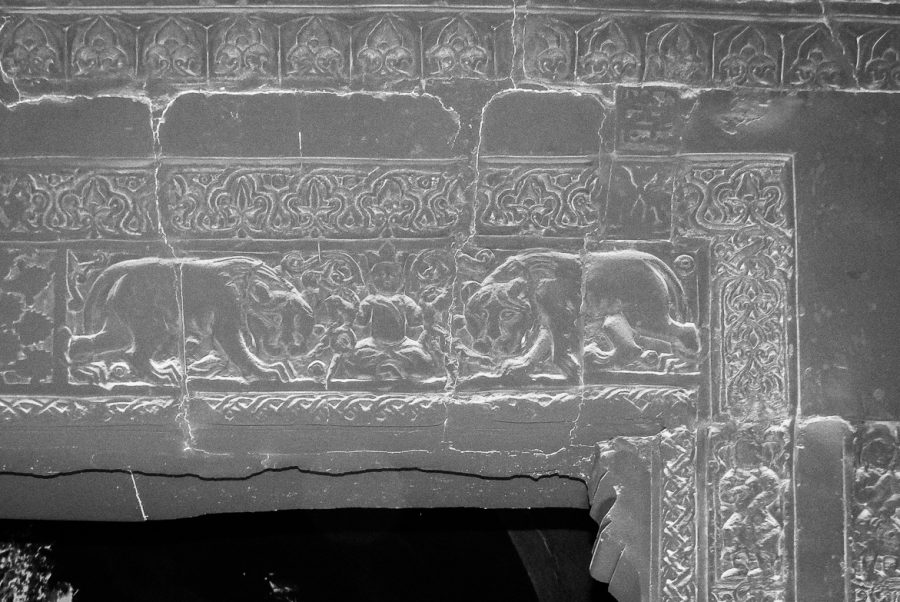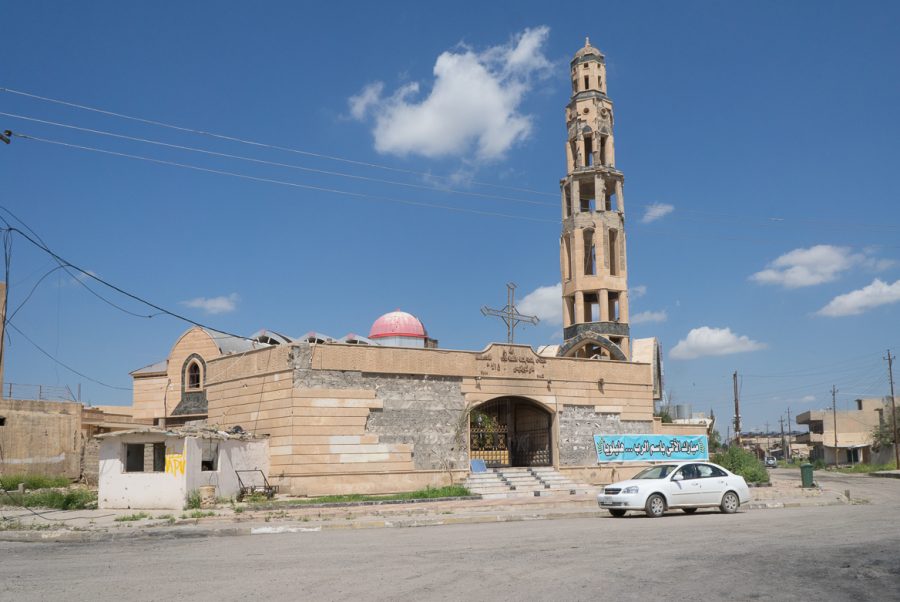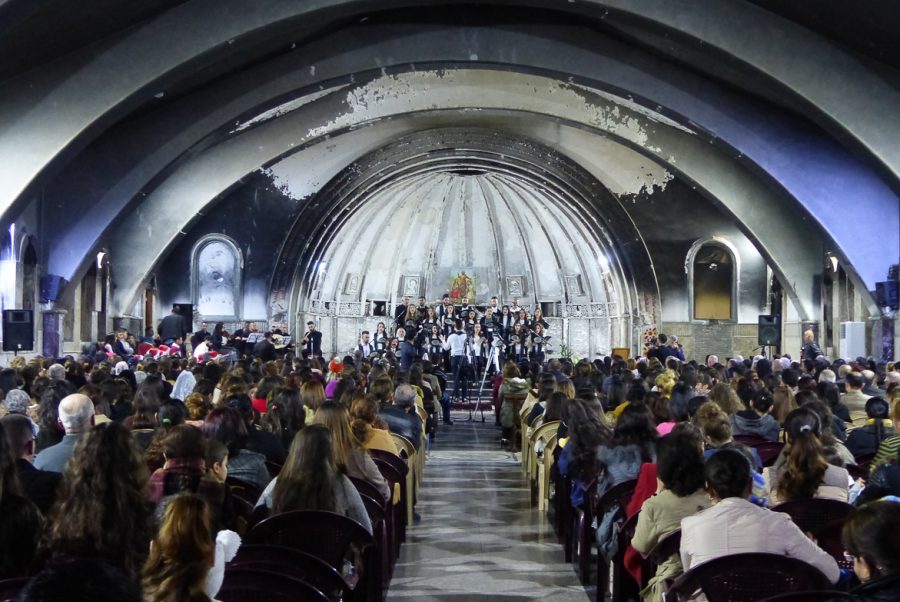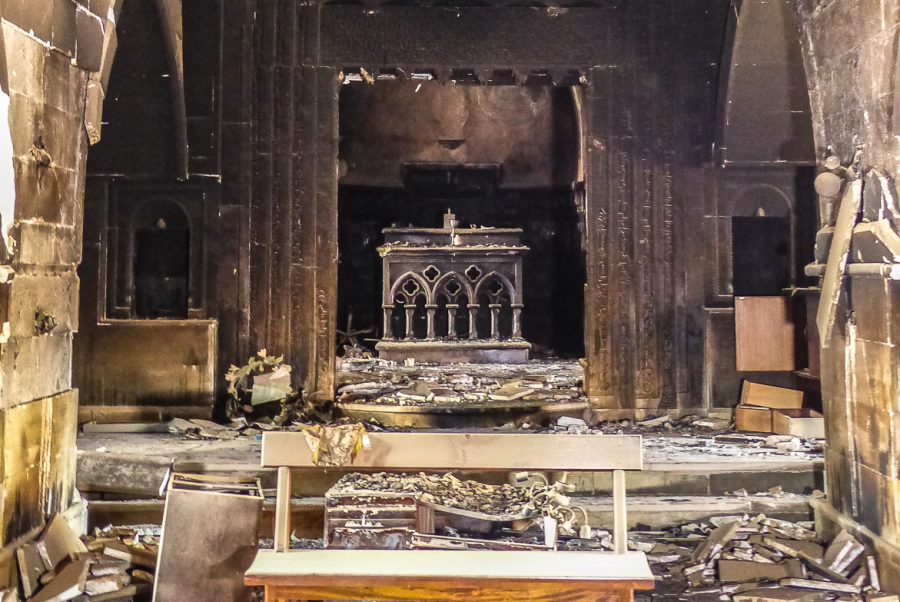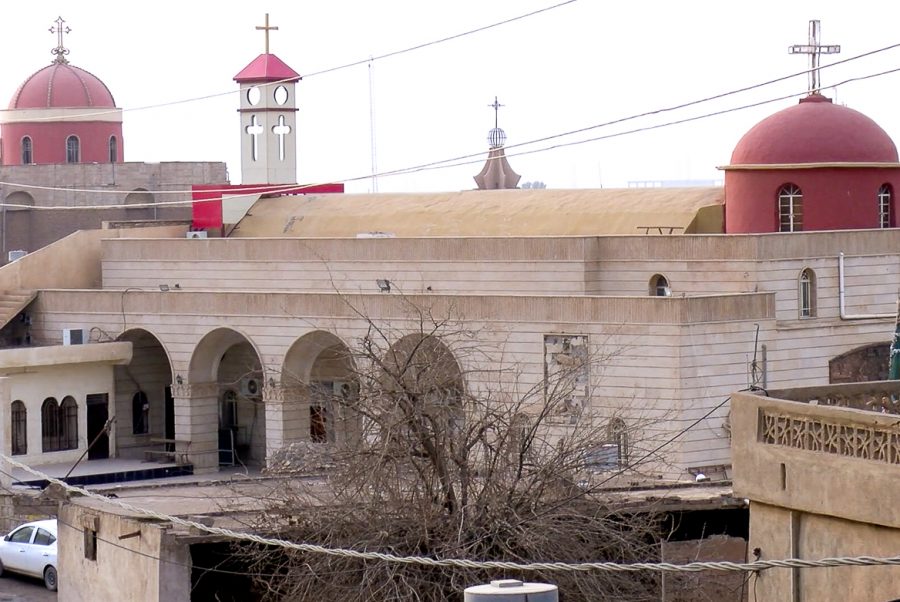St Mary Al-Tahira church in Baghdede (Qaraqosh)
St Mary al-Tahira church in Baghdede (Qaraqosh) lies 36°16’13.74″N, 43°22’37.62″E and 275 meters high. It is the most iconic Christian building in Baghdede, 30 km southeast from Mosul and 80 km west of Erbil.
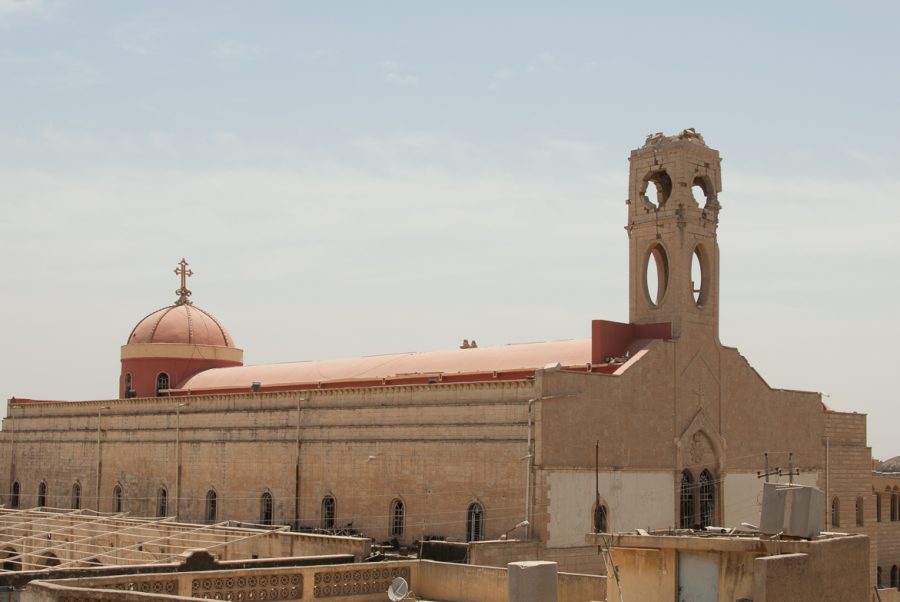
It is the most iconic Christian building in Baghdede, with its two churches, the « ancient » supposed to be from the 13th century and the « new » al-Tahira, built in the first half of the 20thcentury.
Between 2014 and 2016, ISIS used St Mary al-Tahira Church as a shooting range for weapons handling. Since it has been freed from ISIS, the new Al-Tahira has recovered, despite burning and plundering, its influence as a very high spiritual and community centre.
The religious compound Al Tahira. Modern church (10). Ancient church (2) © in “Bakhdeda churches”, Suhayll Qasha, 1982
Situation
St Mary al-Tahira church in Baghdede (Qaraqosh) lies 36°16’13.74″N, 43°22’37.62″E and 275 meters high. It is the most iconic Christian building in Baghdede, 30 km southeast from Mosul and 80 km west of Erbil.
Baghdede is the largest city in the Nineveh plain, 40 km upstream from the confluence of the Tigris and the Great Zab. In the heart of the Syriacs’ plain, close to the great Mar Benham Monastery, its beacon of spirituality, Baghdede was considered as the largest Syriac-Catholic town in the world, before ISIS attacked, which led all the inhabitants to flee overnight from August 6th to 7th 2017. Baghdede was a sort of denominational « capital city ». The town was liberated from ISIS in October 2016 and slowly the inhabitants have started coming back progressively since April 2017. Baghdede opens up therefore a new page in its own history, but its future remains uncertain.
Demography
It would be much risky to present some reliable statistics regarding the demography of this town (and of the whole country), as census is made impossible by successive wars and never-ending mass movements of population. Nevertheless, we can admit that at least 40 000 to 50 000 people used to live in Baghdede before the ISIS attacks. Some probably overestimated statements, made by natives, mention about 70 000 inhabitants.
To this must be added thousands of displaced population (5 000 to 13 000 depending on the different phases), Christian people from Baghdad or Mosul who had settled in Baghdede from 2003 on, and for whom great efforts had been provided with the aim of a long-lasting settlement.
Whatever the reality of demographical data, nearly 90 % of the inhabitants in Baghdede were Syriac-Catholics. The other 10 % were being split between Chaldeans (Catholic), Syriac-Orthodox, as well as a tiny apostolic Armenian community.
Before 1980, this city was said to be exclusively Christian. But afterwards, several tens of Muslim families progressively settled in, as part of the campaign of Arabisation of the Nineveh plain set up by Saddam Hussein.
Toponymy
The name “Baghdede”, still in use today, comes from the Turkish Qara Qoş , which literally can be translated as the Black Bird. However, its former and original name is Baghdeda, which probably comes from Bet Khudaydad, which is both Semitic (Bet) and Persian (Khudaydad) [and which] means “the place, the house given by God” [1].
[1] Source Jean-Marie Mérigoux, O.P., in « L’Orient chrétien dans l’empire musulman », Collection Studia Arabica III, Editions de Paris, 2005.
Fragments of History
According to the tradition, Christianity entered the Nineveh plain and the city of Baghdede from the end of the 4th century or the beginning of the 5th century. More than likely, sources argue that evangelisation began in the 7th century. “The village was first Nestorian[1], then around 615 [it] became Monophysite[2]. In the 11th and 12th century, many Christians from Tikrit, before being forced to convert to Islam, left Tikrit and settled in Baghdeda. In 1743, Nader Shah’s troops besieged the area, plundered Baghdeda and destroyed the churches.
At that time, the villagers escaped to Mosul and took part in the defence of the town” [3].
It is by the end of 18th century that the village became Catholic.
There are still several ancient Syriac-Catholic and Orthodox churches in nowadays Baghdede. All have been violated, sullied, plundered, even burnt by ISIS, all along the 24 months it occupied the city. Despite wreckages and destructions, some of these churches still stand firm against time and invaders and carry on being testament to this distant past.
[1] Nda : Church of the East.
[2] Nda : Syriac-Orthodox
[3] Source Jean-Marie Mérigoux, O.P., in « L’Orient chrétien dans l’empire musulman », Collection Studia Arabica III, Editions de Paris, 2005.
New al-Tahira, ancient al-Tahira church
Amongst all those buildings is the most iconic: Saint Mary al-Tahira (the church of the Immaculate Conception), with its two churches, simply called the ancient and the new one [sometimes reffered as “the Grand al-Tahira” – translator’s note].
Erected in the middle of the old part of the city, the church can be accessed to by a little street sloping gently upwards.
The new al-Tahira church gives access to the whole enclosure. Its construction started in 1932 and carried on until its consecration in 1948.
With its impressive dimensions (54 meters long, 24 meters wide), it is the largest Syriac-Catholic church in all the Middle-East. It makes all people from Baghdede proud, not only with its stature, but with the rallying of all inhabitants during the 16 years it took to build it.
Its impressive dome with a cross on the top of it could be seen from afar. The square bell tower above the main entrance door was the symbol of the town’s inhabitants by itself. It had a great clock in it, above which was a roof with a crucifix erected on each of the four angles.
With a central nave and two side aisles, the new al-Tahira church rests on 22 very imposing Mosul marble pillars
The main nave, three times wider than the side aisles, was lit up by huge chandeliers, which are now charred from fire.
The inside of the building used to be dazzling white. The walls, the ceiling and above all the magnificent vault are now blackened by soot, caused by the arson lit by the Islamist violators who set the benches on fire as they retreated.
Marks of this gigantic fire and the plundering are still neatly visible today. As one gets near the choir and the altar, the unbearable profanation shows up with horror. Under the effects of the heat, some marble pillars got damaged and crumbled. Many of those pillars have been besmeared with Islamist writings and insults against Christians.
At the end of this large main nave used to stand on a few steps a marble altar. It has been destroyed by invaders, and replaced by a wooden altar. Behind it, the violated ancient marble altar and tabernacle stands sheltered under a lancet-arched canopy. The outer part of this arch is adorned with an acanthus leaf ornamentation that can be seen in many other churches throughout the Nineveh plain.
At the liberation of Baghdede, in October 2016, the floor was scattered with cartridge cases from firearms. All the time the site was besieged, ISIS used the church as target practice and shooting range.
On the way out, the end of the nave on the right hand side of the New al-Tahira gives access to the large inner courtyard. Under the paving stones is the parish graveyard. This courtyard had become a shooting range. Right in the middle, the ashes of the burning of books and liturgical stuff were still visible. Some of the outer pillars were riddled with bullets and one could see the inner metal framework.
All around, the courtyard is circled by parish rooms, as well as a little chapel on the left dedicated to the Virgin Mary and on the right, by a replica of Lourdes grotto and Saint Dominic chapel. Opposite the great church and thus closing the courtyard’s space, the ancient al-Tahira church opens after getting down about ten steps. It is a modestly sized church, with three naves and three altars. It has been restored several times, particularly in 1745 after the Persian attack, during which Nader Shah had burnt it, together with all books he could find there. An ancient inscription “mentions the date of 1832 of the Greek era, that is to say 1521 (…) A more ancient date was written there, still visible some years ago, in the tombs’ chamber. Unfortunately, the wall separating this chamber from the chapel was knocked down and with it the tombstone disappeared”, wrote already in 1961 Jean-Maurice Fiey[1], and added “one of the tombstone was one of a priest who died in the year Hegira 616, i-e 1219 AD”. This gives us quite an idea about how old this ancient al-Tahira church can be, without being able to be much more precise though.
Despite the vandalizing of the inside made by the ISIS terrorist, the church still has some precious vestiges, among which a carved hexagon-shaped baptismal font.
[1] Jean-Maurice Fiey, in Assyrie Chrétienne, page 447-448.
Monument's gallery
Monuments
Nearby
Help us preserve the monuments' memory
Family pictures, videos, records, share your documents to make the site live!
I contribute
